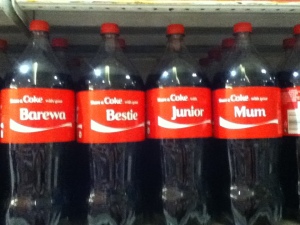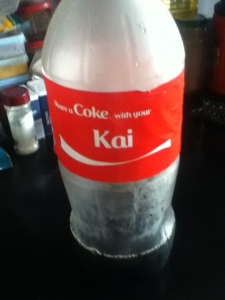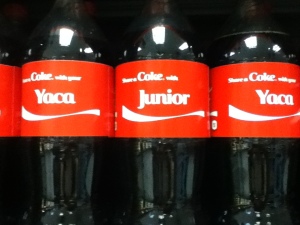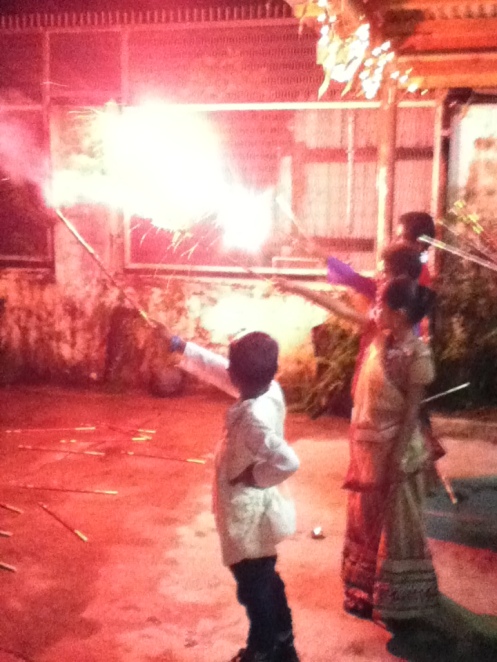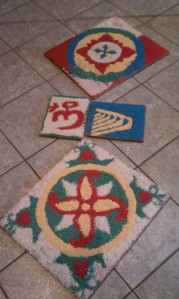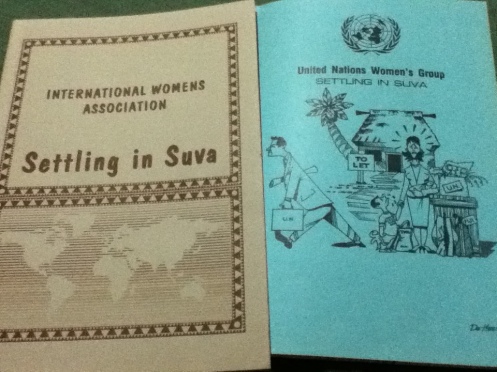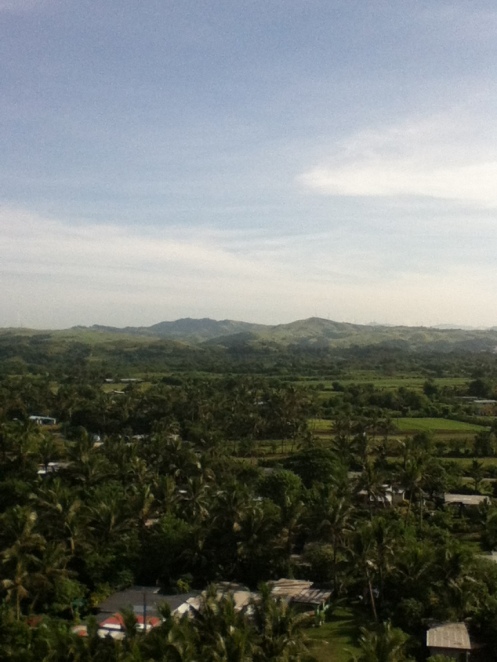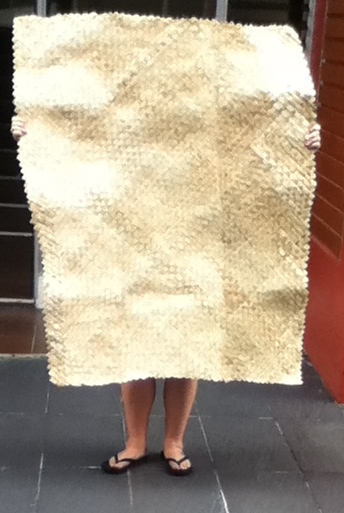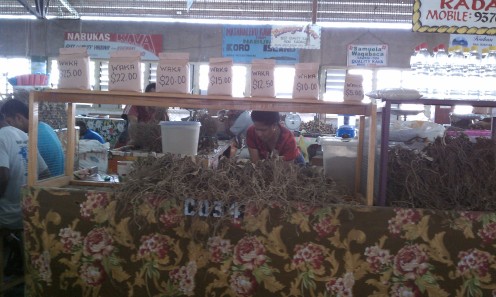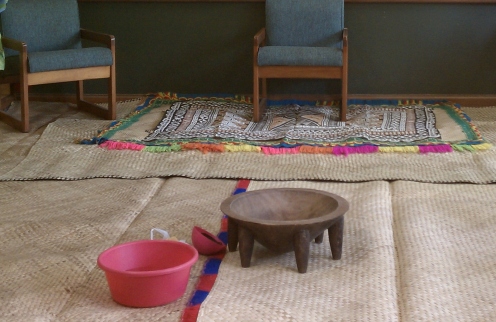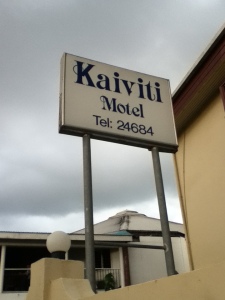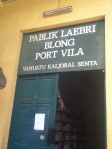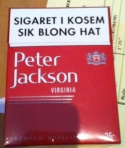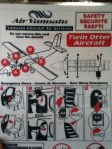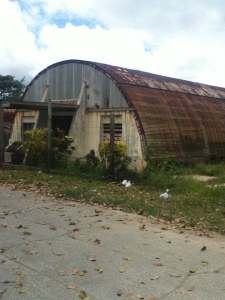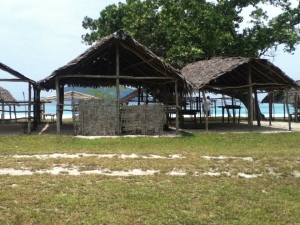The “Share a Coke with (name)” ad campaign hit the US in 2013 and got to Fiji sometime in 2014 (I do remember seeing a “Share a Coke with Santa” last year). Not only is it still going here, I saw a new ad before a film last month that introduced a few different men name Raj (Rajesh, Rajendra, the Raj you know who is good at sports, etc) and suggest you should share soda with them, while showing the personalized Raj bottle. So I guess if the local Coke bottling factory is spending money on movie ads, these bottles will be sticking around a while.
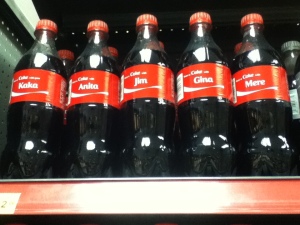 While I’ve seen some names that are specific to Fiji and/or the Pacific Islands (like “Mere”, the local spelling of “Mary”), I do have to wonder if Anita and Gina are from a US or Australian name list. The US version of this campaign has a website for you to see if your name is on a bottle, but I haven’t found such a thing for other countries. I also have no idea how big the name list is in Fiji, but I’ve seen both iTaukei and Indo-Fijian names.
While I’ve seen some names that are specific to Fiji and/or the Pacific Islands (like “Mere”, the local spelling of “Mary”), I do have to wonder if Anita and Gina are from a US or Australian name list. The US version of this campaign has a website for you to see if your name is on a bottle, but I haven’t found such a thing for other countries. I also have no idea how big the name list is in Fiji, but I’ve seen both iTaukei and Indo-Fijian names.
The thing I find more interesting is that many, if not most of the Coke bottles have the word for a type of family member (in both Fijian and Hindi) rather than a personal name.
If nothing else it’s a great way to learn new vocabulary words:
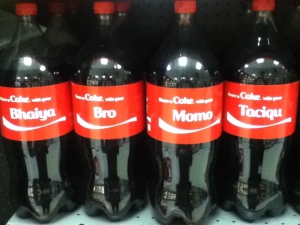 Kaka (in the photo above) = Hindi for uncle
Kaka (in the photo above) = Hindi for uncle
Bhaiya = Hindi for brother
Taciqu= Fijian for younger sibling (If you are a woman who says this word, you mean your younger sister; if you are a man, you mean your younger brother. There’s different words for siblings of the opposite gender from you).
Momo = Fijian for uncle
I’m assuming you can figure out “bro”, “mum”and “bestie”…
“Barewa” isn’t in my Fijian dictionary, but online sources suggest it refers to someone cute/pretty that you fancy. I keep meaning to ask someone at work about this one.
NPR fans may think of Kai Ryssdal, but this actually just means “people”, so I guess “your kai” is like your gang or crew.
“Yaca” means your namesake, so depending on circumstances, this person could be an adult now, a child, or a recently-named infant (please do not share Cokes with babies, even if they are your namesake).
I don’t have a photo of it, but I’ve also seen “your boso”, which is Fijian for “boss”. I’d be very curious to know if the US campaign had that one (I’m assuming they might have had “sister”, “brother”, “mom” and “dad”).
So, who are all these itinerant folks lurking about Suva for 1-3 years? While not an exhaustive list, here’s the major archetypes:
1) Peace Corps Volunteers: Usually these folks are fresh out of university, but there are occasionally middle aged to retirement-aged Americans who get accepted as well. They make crap wages (around Fj$16/day) and most of them live in villages far from Suva and only come to Suva for training, R&R leave, or medical treatment. They tend to prefer to hang out with each other or the people in their village communities rather than with other expats, but their lives are so different from most expats that I can’t really fault them for that. You can often spot them because they are dressed sorta like backpackers in clothes that look like they’ve been through hell, except that their clothes are super-modest. If you see a woman who hasn’t had a decent haircut in 6 months wearing a stretched out baggy t-shirt and an ankle length jersey-knit skirt with hiking sandals, 99% likely she’s Peace Corps. They have the second worst job in Fiji (even though most of them seem to love it), so buy them a beer or two if you run into one somehow.
2) AYADs/AVID volunteers – this is an Australian program that (unlike Peace Corps) lets you apply in a specific location for a specific job that uses your skills. Most assignments are a year long and range from health and education projects to doing public relations for local NGOs. While you see a lot of 20-something early career people in Fiji through AVID, there are plenty of people from other age ranges, too. They get a decent living allowance (especially compared to Peace Corps) so while these folks are volunteers, they generally aren’t counting their pennies. You will meet A LOT of these people and most of them are very friendly.
3)USP/ FNU staff – the two universities in Suva hire a lot of expat staff, especially for roles that require academic qualifications not offered in Fiji (thus resulting in a shortage of local candidates who have trained abroad and then returned). These people are often lecturers (aka what Americans would call a college professor/instructor) but there’s loads of expat support staff, curriculum developers, HR people, etc. You would think they would mostly be from Australia/NZ or other Commonwealth countries, but really anyone from anywhere (Africa, Eastern Europe, etc.) who is fluent in English can be hired. Word on the street is that salaries at USP are significantly higher than those of FNU. Beware: if you get too many of them together at a party, the conversation will turn to whose Dean/Head of School/Deputy Vice Chancellor is the worst and other gossip that is not interesting to non- academics.
4) The NGOs – Everyone from the Red Cross and several UN programs (UN women, UNDP, etc) to World Wildlife Fund and Habitat for Humanity has offices here with employees. Confusingly, there are both volunteers and employees at some of these places, and Australian Red Cross works in Fiji even though there’s also a Fiji Red Cross. All I can say about these folks is they generally are smart and know what’s up, many of them have had other expat jobs before this one and they tend to have a lot of work-related travel to exciting places like Kiribati and Nauru.
5) The Business Community – turns out that even a tiny nation like Fiji gets executives transferred from offices abroad. You see transfers mostly in banks, insurance, cellular phone companies, etc. but there are a lot of other Fiji-based industries (the airline now called Fiji Airways that was called Air Pathetic Air Pacific before) with a foreign CEO. These people are almost always male and around 50. If you ever go to any of the numerous charity functions or product launches that happen at the Grand Pacific Hotel, you’ll see these dudes. They make decent money but seem too busy working to actually relax and run away for weekends at the beach.
6) The regional intergovernmental organizations : Secretariat of the Pacific Community, Pacific Islands Forum, SPREP, etc. – I’m not entirely sure what these organizations actually do. They seem to hire a lot of consultants and generate a lot of working papers and reports on various issues (energy, health, etc), but I have no idea who reads these reports and what actionable stuff happens afterwards. A few of these orgs seem to have really deep pockets and their employees make high salaries. When I meet these people at parties they seem nice and interesting enough, but I have learned not to ask them about their jobs, because the explanation of what it is that they do is usually really complex, or really boring, or occasionally both. I’m sure it’s important work even if I can’t understand it. If you have the same experience at a party, don’t say you weren’t warned.
7) The Diplomatic staff – Embassies and High Commissions employ a bunch of people, some of whom make crazy high salaries. Career diplomats get living allowances that include importing all their furniture and a car, even if it’s a left-hand (American) drive vehicle. Tend to have really posh rental homes and probably throw good parties. You’ll meet them at Embassy/ High Comm events (if you can snag an invite). Ask them to tell you stories of where they were posted before, because you’ll probably never meet anyone else who’s lived in Malawi (unless you go there to visit, duh).
8) The Trailing Spouse -yes, everyone hates this term, but everyone understands it, so until “Lifestyle Scientist” catches on, we’re stuck with it. This is the person who uproots themselves to follow their partner to his/her new job/assignment abroad. This is the worst job in Fiji (okay, maybe Peace Corps is slightly worse with the boils and the giardia and all that) because the TS usually can’t find a job here (I know of only 3 that have) and will find Suva even more boring than their working spouse/partner does. While there’s more male TSs now ( I have even met TWO gay male Trailing Spouses here, which is very unusual) than there were even a few decades ago, it’s still largely women who are TSs. If you have kids with you the days are less boring, but there’s only so many opportunities for keeping oneself occupied; ironically, despite all the volunteers in Fiji, it is very difficult to find a volunteer opportunity after you arrive, and then you have to pay full-price for a work permit yourself just to volunteer a few hours a week! Many TSs gave up a “real job” back home to follow their partner to Suva, so be really careful before you assume a TS has always been a housewife/househusband. There are a bunch of women’s clubs with mostly TS members, so they tend to meet one another pretty soon after arriving.
Note that this is not a complete list: there are other somewhat plentiful expat types I’m leaving out (missionaries, retirees, investors) because I haven’t met enough of them to draw any conclusions, or because you are unlikely to meet them during your 1-3 years in Suva (I see Mormon missionaries in the grocery store fairly often, but shockingly they never seem to turn up at the coffee shop or GPH’s Happy Hour, so I guess we’ll never strike up a conversation). A large percentage of expats join the Rucksack Club upon arriving, which is a good way to meet other people you might have more in common with than your Fijian co-workers.
An aside: a thing about living in an expat community that makes sense when you think about it, but that I did not anticipate before moving here: the chief big social get-together is the farewell party. Someone is always leaving, and it rarely seems to happen to two people at the same time (unless they’re a couple). Depending how strapped for time the person leaving is, farewells may be happy hour drinks, a proper house party, or even a weekend away at a resort with a group of friends…or all three. I’m pretty sure I’ve been to more farewell parties here than I have birthday parties. And even though it’s sad when people you’ve gotten to know go back home (or to their next expat assignment), there’s always a new batch of folks coming in a few weeks…..
I’ve written about Diwali before; it’s a Hindu holiday where you clean your house, settle your financial accounts, buy new clothes and light fireworks. I mean, there’s more to it than that, but that’s the gist of what everyone else is doing this week. Everyone is dressed up in gorgeous clothes, celebrating the triumph of light over darkness, and making awesome food. Go read that post for more background.
Since I don’t have much new to add, here are some photos of Diwali celebrations, advertisements and decorations around Suva from 2012 to 2014:
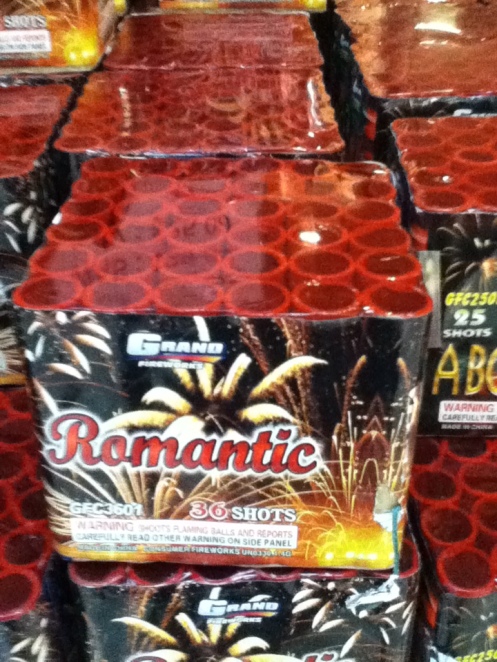
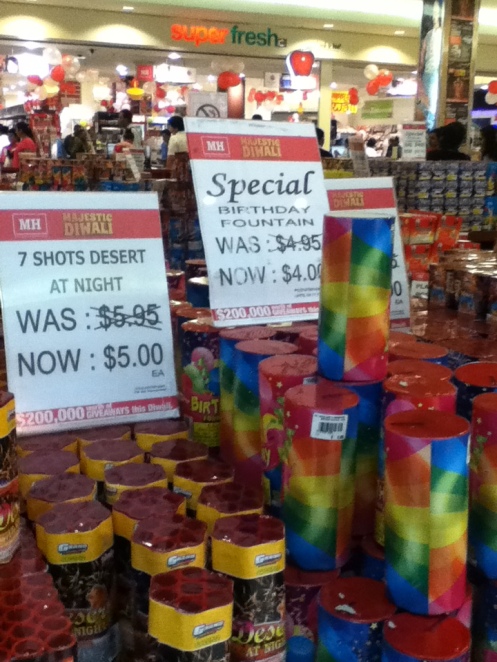 You can buy fireworks at the supermarket here, and they are not terribly expensive. If you come from a place that severely restricts fireworks sales, Fiji during Diwali might be your ideal vacation spot.
You can buy fireworks at the supermarket here, and they are not terribly expensive. If you come from a place that severely restricts fireworks sales, Fiji during Diwali might be your ideal vacation spot.
Maybe I just watch too many old horror films, but I associate cane knives and pitchforks with angry villagers ganging up to kill Frankenstein’s monster (which makes the ad placement on a page about election result disputes unfortunate given this country’s history of coups). Though the ad is probably just encouraging you to clear the brush from your land when you do your Diwali housecleaning.
Diwali is a fine time to stock up on god statues. The prices on these advertisments are written on drawings of diyas, an oil lamp used during Diwali (and other times too, but you’ll see a bunch of them this time of year).
Roman candles are a good “gateway firework” for the youngsters. Don’t worry, there is an adult (out of frame) supervising the pyrotechnics. There are also warnings in the newspaper reminding people to watch the hems of their clothes around fireworks and diyas.
Rangoli made of sand, rice, colored powders or drawn in chalk are often placed in doorways. It can take a while for some expat Americans and Europeans to adjust to the sight of swastikas being displayed as a holy symbol instead of..well, you know. The ones here often have those dots, which helps.
Anyway, happy Diwali to everyone reading this, and happy Deepawali to my favorite readers from South India (ya’ll know who you are. 🙂 )
In about 6 weeks, Fiji will have the first national elections since the coup unpleasantness in 2006. Registered voters will be electing all 50 seats in Parliament at once, on a non-district, at large basis. Every voter gets to choose only one person, and the seats will be awarded by a formula I don’t really understand. It’s not the top 50 vote-getters that get the 50 seats, because that would make sense.
I’ll try not to get too Nate Silver when explaining this (as far as I understand it, which is not entirely); I get that it’s complex and can get a little boring when we crunch the numbers, but this is important. So try to keep up.
It will basically go by political party popularity contest: if your party’s candidates get at least 5% of the total votes cast, your party will go on to the bonus round (I am paraphrasing here). If you are an independent candidate (no party) who can’t attract 5% of the total vote, or your party gets a lot of candidates ranked in the top 50 but only 4% of the total, you get…nothing. There are at least 7 registered parties as of now.
So theoretically, you could have a split like this:
Party A: 74%
Party B: 11%
Party C: 4.5%
Party D: 4.5%
Party E: 4.5%
Independents/other parties 1.5%
Where Party A and Party B get all the seats, and though Parties C, D, and E combined got more votes than Party B and thus could have formed some kind of “We disagree with Party B” coalition, they don’t get a single seat in Parliament. If beloved hometown Candidate X from a tiny island (let’s call it Vermont, just for an analogy that only people who follow American politics will understand) got EVERY vote on Vermont Island, but Vermont Island is 3% of the total voting population and nobody in Suva has ever heard of Candidate X and doesn’t vote for him/her, Candidate X will only get a seat if he/she belongs to a popular enough party that fields candidates that get enough votes to make the 5% threshold.
While Wikipedia assures me that stable Western democracies like Denmark, Austria and Finland use this type of proportional method for awarding seats, I’m not clear on if those places field candidates “at large” or by districts. Chances are none of them have elected an entire Parliament from scratch with no incumbents anytime recently. Since Fiji has 110 inhabited islands, candidates from places like tiny hypothetical Vermont Island will be at a big disadvantage compared to candidates from cities.
But considering the old method was also not district-based, but instead based on ethnic constituencies (ie 23 seats reserved for indigenous Fijians, 19 for Indo-Fijians, 1 for Rotumans, and 3 for minorities such as Caucasians and Chinese, and 25 open constituencies), who’s to say if this is more fair, or less fair. Like US politics, candidates who used to be incumbents or have name recognition will certainly have an advantage.
So since there’s been no Parliament since 2006, and all the political parties have been dormant for a decade (since there’s been nothing to run for), who’s got the home field advantage?
Well, that would be Acting Prime Minister Frank. Frank was a military man when he assumed the office of Prime Minister, so he wasn’t really affiliated with a party when the coup unpleasantness happened in 2006. Fiji was supposed to have elections in 2009, but didn’t because… reasons. Now that Fiji is ready to have fair and above-board elections, Frank has formed a totally new party called FijiFirst and is running for election as Prime Minister.
Hypatia’s FijiFirst and 2014 Election FAQ
Q: What do FijiFirst advertisements look like?
A: There are a lot of them on cabs and mini-busses that look like this:
Q: Wait, doesn’t that look a lot like a sign that’s by the Bau street roundabout promoting road safety that went up a month or two ago?
A: What, you mean this one?
Q: Yeah, that one. Don’t you think it looks like a campaign ad?
A: Don’t be silly. He’s wearing a bula shirt on the campaign ad and a suit and a flag pin in the official government sign. Totally different.
Q: But isn’t “together we can save millions of lives” is a pretty dumb slogan considering there’s only about 903,000 people in Fiji and the government’s own statistics page says that there were only 15 fatal traffic accidents in 2009? How exactly are we to save millions of lives…will buckling up save lives in other countries? And why “Wear. Believe. Act”? Do you have to have faith in order for the seat belt to work?
A: Yeah, the sign is pretty dumb. But let’s go back to talking about FijiFirst. What else do you want to know?
Q: Don’t you think it’s weird that there’s a number 1 in the F1ji logo in the voter registration tent photo at the top of this post? Is that supposed to subliminally make people think of “Fiji 1st” when they register to vote?
A: Certainly not. The 1 is for one vote, since some people think they get to vote for more than one candidate since there’s 50 seats up for grabs. Only an idiot would confuse “one” and “first”.
Q: Wait, didn’t the elections minister (who is also the current Attorney General and a member of the FijiFirst party) recently say that a new party called “One Fiji” could be confused with “FijiFirst” and try to keep them from registering as an official party?
A: Yeah, that happened. What’s your point?
Q: It’s just a little weird to see a 1 in the F1ji logo in an official voter registration booth that’s supposed to be non-partisan, especially if that same government’s elections minister who is also a candidate is claiming “one” and “first” are confusable.
A: There’s nothing weird about a party loyalist simultaneously being an elections official. I mean, Katharine Harris was in charge of running Florida’s election in 2000 while she was also the chair of Bush’s re-election campaign,and that election went totally smoothly and fairly with no legitimacy problems, right?
Q: Uh, let’s change the subject. How will the ballots look for this election? I assume everyone’s name and party will be listed in some random order, since there could be over a hundred candidates to choose from?
A: Oh no, that’s too confusing for the average voter. Instead, the ballot paper will contain a total of 280 numbers, from 135 to 414, and you’ll use a guide book to find the number of the candidate you want to vote for, and then mark their number on your ballot. Like this:
Q: That seems a bit weird. Is that how they did it before?
A: No, in prior elections they listed the candidate’s names and party symbols. But I’m sure this will work just fine.
Q. Is the international community sending observers to make sure the election is actually fair?
A. Yep, Australia is confirmed…
Q. Okay, that’s good news.
A….and Indonesia will be the co-leader of the observation effort.
Q: Indonesia?! You’re talking about the same country from that recent documentary about how some of the people who were in the Suharto death squads in the 60s are now in semi-legitimized paramilitary organizations instead of in prison for genocidal crimes?
A: Well, I was thinking of it as the country that has Bali in it, but yeah, same place.
Q: Pardon my language, but isn’t this election going to be a total clusterfuck?
A: Welcome to the South Pacific.
A friend passed along some interesting artefacts to me: the 1992 and 1996 editions of “Settling in Suva”, a publication for newcomers to the city. The 1992 ed says it’s a revised edition, so presumably there are some other even earlier ones out there. If anyone has ’em, I’d love copies/ scans.
The 1992 edition is published by the “United Nations Women’s Group”, which the book explains is a group of spouses, parents and/or working women associated with the United Nations, now expanded to include “friends” not directly affiliated with the UN. They meet monthly and have a UN survival kit of linens and kitchen stuff they will rent you for FJ$5 per week ($50 deposit). They have a sewing and handicraft group on Friday mornings, which includes “macrame” and “patchwork” as sample group projects they’re up to, and Bridge groups (beginner and advanced) each week. They also have an annual Dinner Dance in October to celebrate the UN’s founding.
The 1996 edition is published by the International Women’s Association, which I guess is the new name for the UN Women’s group (the IWA isn’t listed as a club in the 1992 book), as the format and some of the text is the same, and they also rent out a survival kit of linens, though the cost in 1996 has doubled to $10/week with a $60 deposit) . A sticker on the back tells me this book cost F$5 at the USP Book Centre (ironically, USP Book Centre is NOT listed in the bookstore section of either edition).
Enough about that, let’s learn about our new town, time-travel style!
Orientation:
You can check one of the two daily newspapers, the Fiji Times, or the Daily Post, for info about cultural events and scheduled electricity and water shut offs. Both cost 40 cents (50c on Saturday). In 1996, these are listed again (no Fiji Sun yet).
Two radio stations are listed in the 1992 book as news sources: Radio Fiji and FM 96, as well as “TV1, the (temporary) Television station” (I guess this was when TV was just coming to town?). In 1996, “Fiji television” is listed, but it’s the only station; however there are now three English language radio stations: Radio Fiji Gold (100.2 Fm), Radio FM 104, and FM 96.
The 1996 book has added a “before you leave- what to bring” and “what to leave at home” (though they don’t explicitly mention leather) section. Curiously, it suggests that since furnished houses only have the basics, you will probably need to bring “your own choice of electrical goods (240v), freezer, washing machine, microwave, etc”, though these items “are also available locally”. I can’t imagine wasting 10-20% of my allowed shipping space/weight on a freezer, even if I was coming from a country that sold appliances that would work in Fiji, but whatever.
Health, housing and safety:
Medical advice (p 13-14): There’s no rabies or malaria in Fiji, but there is dengue. You should wash fruits and vegetables carefully and search for small snails, because “the residue these snails leave on the leaves of lettuce and other vegetables can cause meningitis”. I had never heard this and was prepared to scoff, but the internet tells me that indeed, Achatina fulica is found in the Pacific islands and can cause meningitis. So people of 21st century Suva, it’s still a bad idea to eat snail slime. The 1996 edition has added sentences that you needn’t worry about HIV/Hep B in blood transfusions (because of screening/disposable needles), but that “lice and worms are a fact of life here” (generally among schoolchildren).
Housing: “The private housing market is quite tight. House and apartment rents tend to be relatively high, ranging from F$400 and up for an unfurnished apt . For houses with several bedrooms rents are $1000-$3000, furnished or unfurnished.” The 1996 ed has added the caveat to take someone with you when you go to view a rental flat, with an ominous boldface and all caps warning “WE RECOMMEND YOU DO NOT VIEW ALONE”.
Air conditioning – “is not usual in private housing but can normally be installed. Houses located so that they have good ventilation will not need air conditioning”. 1996 ed repeats the fiction about good ventilation not needing AC but adds “Ceiling fans will make life more comfortable”.
Mold and mildew – “Cupboard warmers can be purchased from Morris Hedstrom to help keep cupboards warm and dry.” (???)
The 1992 edition has 3 sentences on security under the “alarm systems and/or burglar bars”, but the 1996 edition adds 8 sentences including that break-ins have become a very common problem in recent years and that dogs are the best crime deterrent. There’s also two condescending sentences about domestic help: “Keep doors locked when inside, and train your housegirl to do the same with her quarters too” and “Teach your housegirl to answer the phone correctly and not answer questions about your whereabouts from strangers”.
Housegirl/maid – pay is around F$25-$50 per week. Gardeners “are usually paid F$15 for an 8 hour day”. In 1996, housegirl pay has risen to F$40-60 per week, but gardeners are still at “F$15-$20 for an 8 hour day”. The 1996 ed also adds details on enrolling your housegirl in FNPF (a retirement/pension program similar to Social Security): minimum contribution is F$4 per week.
Transportation:
Cars/Petrol – “Officers with diplomatic privileges are entitled to a rebate of the duty component paid when they purchase petrol”. You have to save the gas receipts and submit them quarterly to Customs to get the rebate. Not sure if this is true in 2014 as I am not a diplomat- either way, this isn’t in the 1996 book.
The 1996 book says “only diesel and leaded super fuel are available here” (I remember leaded fuel being mostly gone from the US circa 1987: wikipedia says the US started phasing leaded gas out in 1973 and was banned by 1996) and that “Left hand drive vehicles are no longer allowed to be imported into Fiji” (obviously not the case anymore, as there’s a left hand drive Hummer H3 (!) that I see downtown a fair amount).
Buses- “Routes and bus numbers are printed on the reverse of the map of Suva City” (bus numbers? THE map?!) – repeated in 1996 ed., which adds that bus fares within Suva are “less than 50 cents” (70 cents to $1 in 2014) and that a bus from Suva to Nadi Airport is F$7.50 (now about F$18, or $22 if you take the TFL express)
In 1992: “Taxis cease operation at 12 midnight on Saturday and 10pm Sunday” ; this has been removed from the 1996 ed. 1996 adds this advice, still true in 2014: “Make sure that you have small change, taxi drivers often carry very little”
School and work:
Education: “Several locally run Schools of Nine operate in Suva, which are supposed to have only nine children, but often have many more”. (sounds like Fiji, alright) – omitted in 1996 book. The 1996 book adds “Whilst expatriates mostly patronize The International School you might wish to consider some of the ‘local’ schools, many of which have high academic standards”.
“Schooling is not compulsory in Fiji”. Government schools are free, but you have to pay for uniforms, transport, etc.
“Government schools have a policy for racial balance (40% Fijian, 40% Indian, and 20% other)” – the intro pages of both editions of this book don’t give the demographics of Fiji at the time, but I’d be surprised if “other” was more than 12% of the population. I’d bet they had a hard time getting 20%, especially if all the “other” expat kids are going to the International school.
Work permits are required for volunteer jobs. “Work permits are very difficult to obtain”. The 1992 book lists 25 possible leads for volunteer opportunities, including this one from Riding club for the Disabled: “Crippled, blind and retarded children develop physical and social skills”. The 1996 book has pared this down to three; the Fiji Museum and two agencies that “may be able to advise you on a use for your talents”.
Restaurants and nightlife:
Food- 1992 ed: “There is a ban on Sunday trading, however licensed* restaurants re allowed to operate between 12-2pm and 7-10pm on Sundays” (*note for Americans and others unfamiliar- this means “having a liquor license”,)
Restaurants listed no longer around in 2014: Swiss Tavern, Disney Family Restaurant, Red Lion, Aberdeen Grill, Pizza Hut (apparently not affiliated with the US chain), YWCA Restaurant. 1996 book has this intriguing listing: “Berjaya Inn- Malaysian Food Thursday nights, Hawkers stall- reservation advised as this is very popular” – how the heck do you make a reservation for a hawker stall? Maybe they should have gotten one of those deli “take a number” machines.
Restaurants still around now listed then: Tiko’s floating, Old Mill Cottage, (Singh’s) Curry House, Scott’s (in 1996 but not 1992 ed), Great Wok of China, Wishbone. Bad Dog Cafe isn’t in the 1992 ed, but appears in the 1996 ed under “Coffee shops”.
Nightclubs- Traps has been around since at least 1992, and both books list “Rockefellers and Lucky Eddies (discos)” ; it’s weird to see “disco” used in a non-1970’s context. One of the Carnavon Street spots was called “The Barn” and featured country & Western music.
Clubs and activities:
In 1992, 2 places have weekly Bingo, Fiji club offers Bridge 3 times a week, 2 clubs have mahjong, the Classical guitar society offers “Listening to records and playing the guitar”, there’s a photographic society, shell-collecting club, and the “Fiji Morris Men”, which does Traditional Englishmen’s Morris Dancing. In 1996, the Guitar Society and the Morris Men are MIA. You could learn Japanese at “Fiji Centre USP” in 1992, but not in 1996.
Also, sounds like the Fiji Arts Club/Playhouse was quite happening in 1992 : they have classes in painting, printmaking, modern dance and Scottish Country dancing, they stage plays (and musicals), have a collection of musical scores and instruments (presumably to loan to members) AND a costume rental scheme! In the last two years I’ve seen one art show at this building, but never heard that they still do any performances.
Cinema- 4 listed in the 1992 book (none of these are around today): Regal (now Ming Du Restaurant), The Phoenix (boarded up but building still standing, near bus station), Lilac theatre on 110 Waimanu road (apparently near the CWM hospital) and the Raiwaqa Twin Cinema on Grantham (no address given). There’s actually a great photo album of ex-movie houses in Fiji on Facebook, courtesy of the Fiji Museum. The 1996 book just says “there are many cinemas in Suva, and a new cinema complex is under construction” (presumably Village 6).
Services and stuff to buy:
Telephones- local calls (assume this is landline and not payphone) cost 20 cents in 1992 and 13 cents in 1996. Postage: local letters are 12 cents in 1992/13 cents in 1996 (remember, the penny is still around), letters to NZ are 30c/31c, Australia 42c/44c, USA 59c/63c . A postcard (worldwide) is 22 cents (23 in 1996).
Banks in 1992 include the National Bank of Fiji, Merchant bank of Fiji, and Habib Bank, Ltd (as well as ANZ/Westpac/Baroda that are still around today). 1996 lists these as well as “Bank of Hawaii”. 1996 has added information about “external accounts” (ie the type of bank accounts available to non-residents) and mentions EFTPOS services (not mentioned in 1992).
In the 1992 “non-food shopping” lists, there’s 8 different “duty free” listings (Prouds, Tappoo, Brijlal still around, though not as downtown duty free shops)- apparently downtown Suva used to have the same kind of tourist shopping that Port Vila, Vanuatu has now. There are 4 listings for “Jeans” and 8 for musical instruments, though no listings for records, cassettes or CDs.
The 1996 ed lists “The American Shop” near the CWM hospital, carrying Heinz, Nabisco, Hershey, etc. “The range is diverse and growing as demand grows”, a phone number for “Fresh tofu delivered to your home”, and headings not in the 1992 book for “computer supplies”,”Pool pump repairs” and “swimming pool maintenance” ,where I see the first (and only) occurrence of a mobile phone number (which is 6 digits, just like all the rest of the numbers listed).
Recycling- in 1992 the bottle trucks* come around “most neighborhoods” and pay 50 cents per dozen. I have no idea what the current rate is, as I’m still half asleep or getting ready for work when they come around at OMG o’clock, so I just leave them outside the gate for someone else to collect on. The 1996 book has a listing for “recycling” in the index but the page is wrong and it looks like they accidentally cut that section.
Videotapes- cost $1-$2 to hire. Presumably you have to bring them back instead of keeping them. You can also hire a VCR and a TV. Apparently video rental was thriving in Fiji even BEFORE broadcast television existed here: people had (or rented) TV sets just to watch videos. A good article on that (and the transition to purchasing copied DVDs) is here.
This concludes our look at moving to Suva 22 to 18 years ago. I’d be curious to know how long this publication survived before the IWA either grew tired of compiling it, or decided all this info was more-or-less available online and there was no longer a need. Judging by all the questions I get about moving to Suva from people who find my google-bait post (and the follow ups on what to pack), there’s still a need for a PDF or wiki with this type of info on relocating to Suva. Maybe in my copious spare time….
*Aside to my Suva readers: BOTTLEBOTTLEBOTTLEhonkhonkBOTTLEBOTTLEhonkBOTTLE, which I’m pretty sure will replace “Ni sa yadra” as the standard morning greeting in a few decades.
I realize I haven’t been posting as much as I did my first year, and I guess a lot of that is that I don’t have as many observations as I did when I first got here. Interesting things still happen, but I’m not as overwhelmed by life in a foreign country as I was in months 1 through 6.
I have a 3 year contract*, which ends in either July 2015 (when my work visa expires) or September 2015 (the technical end of the 3 years). Either way, I’ve now been in Suva for 20 months, so I’m well past the point where a reflective post is de rigueur. So here it is:
What I have learned:
You will get used to the heat, and the rain, and maybe even the litter, but not the fact that there are really only 10 restaurants worth eating at more than once. I routinely gain 6 pounds on vacations to Western countries making up for lost time/cuisines I’ve missed (and then sweat them off when I get back to Suva).
The local pizza and the local/Australian cheese does not get better the longer you are away from American/European cheese. My first meal on last year’s visit home to the US was pizza.
Because of the ubiquity of American TV shows, your co-workers will understand words like “ya’ll” or “okey-doke” that no one else uses here, but they will still laugh at you when you say them.
Learning the minimal amount of Fijian language I learned in a one semester class was very beneficial, and I wish I’d been able to do it sooner. Knowing phrases not in the Lonely Planet vocabulary section usually makes people light up when you attempt to converse (though they still won’t correct your middling grammar/pronunciation unless they know you well, because they’re too polite to do so). My two most useful phrases thus far are “I live in Suva” (to assert that I am not a tourist to the hawkers in front of shops) and “I am not from the boat” (When a cruise ship is in town, releasing other pasty Caucasians into downtown Suva. See comment for “I live in Suva” for the reason this is useful).
You never truly appreciate all the diversions you had available at home until you’re away. In the US, I went bowling maybe once or twice a year, and to the symphony or the theatre even less than that, but that stuff was always available should I want it. In a place with two movie theatres and plays maybe twice a year, I now regret not taking better advantage of the cultural activities back home. And things where Seattle excels that I did take advantage of (the excellent public libraries, the NPR station, KEXP, actual bookstores and music stores) I have missed terribly.
I can now identify 99% of the regional fruits and vegetables (wi, ivi, duruka, bele, etc) and have tried all of them, but I still haven’t embraced dalo (taro) enough to have ever bought any to cook at home. I’m okay with that.
I have learned that “boredom” is what you make it. While there’s way less to do here and more down time, I’ve managed to keep myself busy with reading, movies, writing, making friends, etc. And when something exciting and new (a performance, a festival, the opening of an upscale supermarket) does happen, it makes the week that much better.
Despite gorging on pizza whilst on holiday, you learn to do without and not mind. The first year, when other expats were travelling to the US or Australia, we had wish lists (decent coffee, certain spices, current books) to bring back, but now, with an impending trip to the US over the (American) summer, I can’t think of anything I’m desperate to bring back for my final year. And I constantly whisper “First World Problems” to myself when I see someone on the Suva facebook group asking about where to get SodaStream or Keurig refills.
As I was writing this post over the course of the week, a very similar post from a blog I subscribe to appeared in my inbox. She says “You can get pretty much everything you need in Suva” , and this is totally true. Not everything you WANT, but everything you NEED. Living here has taught me the difference between what I need versus what I want.
But don’t get me wrong, I still get mildly excited when a local store (momentarily) stocks a luxury foodstuff like Grape Nuts or Diet Dr. Pepper. If I ever see Grape Nuts again at the Cost U Less, I’m gonna buy two boxes.
Working here has been both amazing and frustrating, often during the same day. The Fijian easy-goingness and disinclination to speak up (about problems or to propose innovations) has only adapted so much to the Western model of Getting Things Done, and I continually struggle with my American expectations of work behavior(s). I know the problem is -my- expectations within this culture, and I’ve (mostly) come to terms with that. This will be very helpful when I return to the US, as far as being able to relate when a co-worker from another country has difficulty adapting to American work styles because they find OUR way of doing things unusual.
I have learned what a great partner I have in Hermes. Not that I didn’t think so before, but you really appreciate what you have when you go through crises or extreme stress together. He’s made many sacrifices for us to be able to come here for my job, and soon it will be my turn to return the favor (foreshadowing alert!).
I’ve learned more about what it means for a country to be “developing”, both for the people that live there and on the international stage. In the US we never get news about tiny Pacific Island nations unless something bad (cyclone, flood, coup, etc.) happens there. Seeing what makes the newspapers in the region has been eye-opening.
While I will never truly fit into the culture here and will always be an outsider looking in, I have gotten to experience great things that most visitors don’t get to see (as well as a few not so great things). While it’s often not gone according to plan, overall, I have no regrets. Living far from home isn’ t for everyone, but I’m glad we did this, even if I will also be glad when it’s time to go home.
*Spoiler alert: I won’t be renewing it- I’ll be ready to come home at the expected time.

One of the more common questions from vegan and vegetarian friends in the States since moving to the South Pacific is “how difficult is it to be veg in Fiji?”
The short answer is “not that tough at all,” but an accurate answer is probably a bit more nuanced than that.
Eating in?
Part of the reason I first visited Fiji in 2009 was because of the assumed ready availability of veg options due to the country’s large Indo-Fijian population. I wasn’t too far off in that assessment, as Indian food options are in almost every commerce center (on Viti Levu at least), and often even the smallest curry shack I’ve found has at least a few veg items on the menu beyond the requisite veggie samosas.
For the indigenous portions of the Fijian population, it’s more of a mixed bag. While there are some dishes like palusami that can frequently be entirely vegan, it seems like seafood, pork, or chicken find their way into most Fijian foods that I’ve seen and it’s rarely a surprise to learn that “safe” options like palusami often have some meat snuck into them somehow. Even in villages where fresh meat or seafood may be less common, tins of corned beef and tuna are as readily consumed as microwaved meals are in the US. A personal note on the taste front, probably 80+% of indigenous Fijian food somehow involves cooking in coconut milk so if you have a problem with that flavor–veg or not–you’re gonna have a bad time.
Being from the Northwest, the whole notion of “eating local” has kind of been drilled into my head for years. As has been mentioned on this blog more than a few times, there are probably at least 25 or more common locally-grown produce items at most markets that are usually quite cheap. Naturally there are local fruits and veggies that are seasonal (duruka season just wound down for example), but Dalo (taro) and its leaves (rourou), kumala (sweet potatoes), and local greens are pretty much year-round staples, and a similarly the almost year-round abundance of fresh ginger, citrus (moli), and very delicious fiery habanero peppers known locally as “bongo chillis” (that’s $3FJD from the market’s worth below) all provide some great compliments to these.
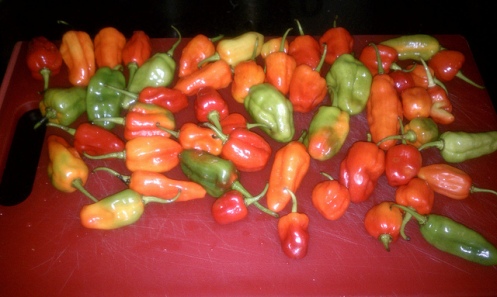
But as cool as that is, it’s also important to remember that Fiji is an island and if it isn’t grown or produced here, it needs to be imported at an added expense that’ll often punch you right in the wallet. While there are a few often non-locally produced staples like potatoes and onions that are price-controlled or nearly so, and some others that are consumed frequently enough to sometimes not be entirely unaffordable (often apples and oranges), capsicum, grapes, and other produce that is usually shipped in for smaller markets will normally be pricey and not found everywhere.
That same logic applies to “western” veg alternative options that are far less commonly sought here and often priced like rare commodities as a result. You will be able to find shelf-stable soya milk on the shelves of many mid-sized and larger supermarkets at roughly 50% more than the price of UHT milk, and as in the States there will be a few coincidentally vegan margarines at reasonable prices too. Rice/almond/oat milk is typically found at the Cost-U-Less in Suva, which also sometimes stocks a soya cheese or two and even a way-expensive vegan sour cream occasionally. While Fiji seems to consume more ice cream bars per capita than anywhere I’ve ever been, I’ve never spotted any sort of frozen soy, coconut milk, or similar non-dairy freezer item.
Cost-U-More is also the only source I’m aware of in Fiji for something approximating a “Boca”-style burger (which at four patties for $11US is not cheap), veggie sausages (about $8US for six), and my personal favorite (honestly) Sanitarium Nut Meat. The later tastes far better than its name implies, and if you don’t have wheat or nut allergies and can get over the tinned dogfood appearance it works really well for burritos, shepherd’s pie, or other veggie “mince” items. You can also spot the occasional imported tetra-pack of tofu, most commonly at the handful of Chinese grocers around. For a while I was able to find vital wheat gluten and even nutritional yeast at a local Adventist shop, but I haven’t seen either around in more than six months and my days of making my own seitan in Fiji are long over as a result. I’d rather not talk about my attempt to make tempeh.
Thankfully for there are more than just the expensive options available when looking for meat alternatives locally. There’s a decent fresh firm tofu produced in the Samabula neighborhood sold commonly in sealed tubs at a number of Suva supermarkets. It’s delicious, but not without problems of its own. The thin plastic on top of the tubs is sometimes poorly sealed or suffers from a tiny puncture or two in transit, tainting the tofu inside. For that reason I usually pick up the package and shake it to look for drips before buying. It’s also a good idea to look at the sell-by dates whenever you pick it up, as the limited demand for it in many local supermarkets can make some reluctant to pitch past-due stock and from my experience the tubs bought closest to expiration are far less palatable (do NOT smell the water) than the freshest batches. You’ll find block tofu for sale from some of the Chinese stalls at the market too, but I can’t speak to the quality of that stuff personally.
The large Indian community also means that Nutrella–or soya chunks/TVP–is readily available at most mid-sized and up supermarkets, though I’ve yet to see it served in any restaurant I’ve been to. It’s usually very cheap (like $2.50FJD or so) and is a completely unflavored dry TVP. It does require a bit of doctoring to make it more palatable before being chopped up for use in tacos or a vegan bolognese, and I’m a fan of using Australian-produced Massel stocks (which often aren’t too hard to find and are all vegan) to help do so.
As to vegan baked goods, they’re extremely rare finds. Though many of the packaged cookies in all of the big stores are vegan, usually that’s something to make at home as well. Other than margarine and nutrella, I’ve spotted soya mayonnaise in stores other than Cost-U as well (though I’m not a fan of the one brand I’ve seen most often).
Dining out?
Resorts will usually be quite accommodating to vegetarian guests, and even vegan guests can often do OK at all but the backpacker places … though both can expect a lot of pasta primavera/pizza/salads/fries/etc. After a couple of years here I’ve yet to see any resort or hotel that had a decent veg menu much beyond an Indian dish or two or an often overcooked “vegan lasagne” (usually mushy layers of pumpkin and sweet potato in a too sweet red sauce), though the high-end resorts that we could never afford to go to may be better.

In Suva, Nadi, and other towns you’ll probably spot a veg item or two on most menus at sit-down restaurants, but with the exception of Indian and Chinese places few will be vegan and even fewer still will probably be something you’ll want to eat again and again. You can expect your veg options to often be comparable to visiting a small town in the rural American midwest, so fries/salad/pasta will be staples along with the occasional Asian dish or the once-in-a-blue-moon “veggie burger” that is always not too much more than a pile of vegetables smashed together and fried.
Probably the go-to for most veg folks here is Indian. Of course for vegans, that doesn’t ensure that menu items won’t have yoghurt or ghee, the clarified butter that’s in a bunch of Indian food. Since both ghee and yoghurt are pricey though, they are not very common at all in smaller shops/food stalls and probably only in sweets or really rich non-veg foods most frequently from what I’ve seen.
Asking “does this have ghee” doesn’t always yield the best results, and the old vegan trick of “I’m allergic to…” very rarely works either. From my experience in asking these, staff may assume that either you want it to have yoghurt/ghee (to make it more decadent since you’re a picky ex-pat), so they’ll say it does to save face or simply tell you it does just to err on the side of caution and again save face. My workaround for this problem is usually to stick to Indian menu choices that pretty rarely have dairy–such as bhindi masala (okra) or a jackfruit curry–though sometimes even items that you’d expect to be dairy-free such as channa masala (chick peas) may have a splash of yoghurt hidden in there that your dairy-sensitive stomach may notice about a half-hour after eating. There is a Krishna run chain of Indian shops throughout Viti Levu that are largely vegan, but frankly I’m not much of a fan of their food beyond having a few kick-ass bread pakoras from them.
So is it difficult?
No, but if you’re for some reason expecting daily life to contain the wealth of vegan goods in a Whole Foods or something, you may want to stock up on supplies before you get over here as it’s just not going to happen.
It’s not often there’s Big Exciting Cultural events in Suva, and last week, there were TWO. Naturally, we went to both.
First up was Karmen at USP , based on Bizet’s opera but placed in a Fijian setting and sung in English (except for the “Habanera” aria, which was in French) . Doing a local version seemed logical, as Carmen has been adapted a bunch of times in the last 100 years already, and the idea of a famous bullfighter isn’t really relatable for 99% of the world anyway. So now Carmen’s first beau is a policeman, and her second is a famous rugby player. The anthemic “Toreador” song becomes “Go Fiji go/ we need a champion” (Go Fiji Go is a common rugby chant) and one of Carmen’s songs has a chorus like “In Suva, I go to the seawall/ I dance meke/ and drink kava”. The big fight scene was adapted from a Fijian men’s war dance/ meke- if you don’t know what a meke looks like but you’ve seen the New Zealand All-Blacks Rugby team do the haka before a match, it’s sort of like that.
Overall I really liked the production. I wasn’t so familiar with the source material to notice what had been cut to give it a run time of about 2 hours, but I’ve now been here long enough to get all the Fijian references added to the play. The story (boy falls in love with haughty girl, girl falls in love with someone else and leaves boy, it ends badly) is pretty understandable no matter what cultural signifiers you add in. The majority of the singers were quite good, even when faced with difficult sustained aria segments that would be a challenge for anyone not trained in traditional opera.
I had one minor gripe regarding the new lyrics to “Beat out that rhythm on a drum” (which is actually from the musical “Carmen Jones” but is based on a melody from the opera): the chorus became “Beat out that lali drum”, which is two syllables too short and sounded weird if you know the original and are expecting that cadence to accompany the melody. Since the song was accompanied by a lali anyway, it seems they could have kept the original lyric, since anyone present could identify the lali being played as the drum of the song. I get the need to Fijify the bullfighting angle of the plot, but the original “drum” lyric didn’t need to be tampered with.
USP seems to do a big original play/musical/dance performance about twice a year. I’ve only seen a few of them, but they’ve always been good and ambitious. Unlike similar “Broadway” performances in the States, tickets were quite reasonably priced: only FJ$10, which is the cost of one McDonald’s value meal, or about one and half tickets to a first-run movie. I can guess why they don’t do more plays in a year: unlike your typical liberal arts college in the US, I bet USP doesn’t have dozens of drama majors willing to appear in done-to-death classics like “Death of a Salesman” or “Our Town” just to get the stage experience- I’m not even sure it offers a theatre degree.
While I’ll see pretty much any musical theatre performance that happens in Suva, my wish list if someone’s going to adapt another well-known work would be Sondheim’s Sweeney Todd. Think of the potential given Fiji’s cannibal past!
So that was big event #1. The second was the Fiji Jazz and Blues fest, which had both local and Aus/NZ/US acts over 4 days. They had acts rotating among 3 venues, which unfortunately weren’t all near one another, but it seemed like it was easy enough to catch a performance on a different day if you couldn’t choose between conflicting options.
I saw about 4 and a half full sets on Saturday, and only one was really not my cup of tea (a jazz vocal ensemble). We had reasonably nice weather and the schedule was only delayed by 20-30 minutes, which is admirable for any festival, to say nothing of one dealing with “Fiji Time”. I think this event is not quite annual (ie they didn’t have it last year, but had it the year before that), but it seemed well attended, which is hopefully enough to keep it going. My philosophy is that even if I’m not that interested in a type of music , I’ll go anyway, since it’s something different to do, and supporting live music and performance via buying a ticket is the best way to encourage more of it in the future. Other than cover bands that play at tourist resorts or at restaurants frequented by expats, there’s not that much live music here, so anything apart from the usual is most welcome.
Following such a busy week, this week is a bit of a letdown, though there is a netball (like Women’s Basketball, except with more passing and less dribbling) tournament that’s only $3 a ticket. We’re also eagerly awaiting the opening of the upscale Mexican restaurant (was supposed to be open by the end of April, but you know…Fiji Time), which seems like it could happen any day now if the placement of their outdoor dining furniture is any indication.
For over a year now, I have had the rare opportunity to learn firsthand about Fiji’s court system. We’ve already had the pleasure of dealing with the police after a burglary (and a year later, a mugging), but of course these crimes never resulted in arrests, and thus, no court. No, my court experiences have all been part of a Sisyphean struggle to get my security deposit back from my first landlord.
Guidebooks and blogs will tell you that Fijians will generally attempt to “save face” in a confrontational situation, and I have found this to be true. I would go further and add that if there’s something unpleasant that a Fijian doesn’t want to face and can potentially avoid by waiting you out, he or she may do so (more than a Westerner would). So if you’re a foreigner that will be leaving in a year or two, it might make sense to just try to ignore you (or whatever you’re doing/saying that is confrontational or makes someone have to admit fault) until you go away (either literally or figuratively). Most frustratingly, this seems to be as true in business/customer service situations as well as in social ones.
This cold-shoulder approach generally works to make a minor confrontations like “the guy at the counter charged me for 5 ketchup packets but only gave me 2” or “your grocery store sold me a food product that expired 2 months ago” go away- the employee will leave you waiting for a resolution long enough that you’ll decide it’s just not worth it (time or money-wise) to pursue the remedy. Where American retail employees generally pass difficult queries (or difficult customers) up to a manager, in the Pacific the strategy appears to be “stall, and don’t admit fault OR assign blame to another employee so that no one’s feelings are hurt”, which makes for challenging encounters.
For example, say your internet service is suddenly cut off, even though you’re paid up. You call them and ask they look into it, which they promise to do, and then they say they can’t find a problem. Then you call and ask for a technician to check the lines/equipment, who they promise to send, who does not come for several days. You call back and ask if the technician was in fact called. Instead of admitting that the technician was booked up or that they forgot to call, they say they’ll look into it and call you back when the technician will come, which they never do. When you call back, you get the run around again. I find that going to an office in person or asking to see a manager will actually get things done a little faster (though it still took forever to get our internet back on, and even longer to get a credit for all the days I’d paid for but could not use).
Saving face seems to extend even to something that isn’t anyone’s specific fault- instead of following the business model that if the customer’s service isn’t working, someone who knows what they’re doing needs to fix it so the customer gets what they are paying for, it’s almost as if the employee feels they will lose face since you have a problem with the business and they just happened to be the one that answered the phone. Needless to say, if you are disgruntled or angry about the thing that isn’t working rather than stating your problem matter-of-factly, the avoidance behavior tends to be more pronounced.
I’m not saying all Fijians do this, of course, I’m saying you will encounter this “ignore it and it will go away” behavior far more often in the Pacific than you will in North America, and that even if you understand why it’s happening, it’s super frustrating. Which brings me to my security deposit.
The security deposit was equal to a month’s rent, so my landlord would be silly to think if he waited me out I would just shrug my shoulders and write off the loss. But incredibly, that appears to have been his strategy, which is how I ended up taking him to court.
I had a 3 month lease, which we did not renew considering the burglary and subsequent prowlings. The law, as far as I understand it, says the landlord is supposed to refund your deposit within 14 days of when you move out. I figured, this being Fiji, that 2 weeks really meant 4 weeks, so when I left messages with my landlord on week 2 and week 3 about returning the keys and getting by rental bond. He didn’t return any of my calls. At one point I called from a payphone to disguise my number, he answered and stalled, promising to call me back soon to return my money.
We moved out in early November 2012, and I called maybe 4 times total. I figured there was no point in pursuing any of this during the Christmas holiday since he’d be visiting family, so in January 2013, I called the Consumer Council of Fiji, a quasi-government independent agency that arbitrates disputes like this. To my great shock, they were able to coax my landlord (we’ll call him Bob even though that’s not his real name) to come to their office and meet with me and them. Bob took the keys and signed a document promising to pay the deposit back in three installments.
Let me digress to say that my entire lease term was only THREE MONTHS long, and somehow, Bob managed to spend, rather than hold on to, my deposit in that short period. Which is why Bob kept avoiding my calls, and as we’ll see, most other official summons- he didn’t have my money. Many of my Fijian co-workers have said that iTaukei people are generally not really good about saving/budgeting when it comes to sudden influxes of cash. I don’t know if that’s actually true, but it certainly seemed true of Bob.
Bob did not pay any of the installments, so I had to file in small claims court. It only cost $5.75 to file, but then I had to pay a bailiff $25 to serve him with papers telling him to show up to small claims court a month later (May 2013).
He did not show up to court, so the judge awarded me the whole amount to be paid in smaller installments than the ones Bob had originally agreed to. But then I had to serve Bob with ANOTHER document telling him the court’s decision (and pay another $25 to have THAT served).
Bob came by my workplace a month later (June 2013) and gave me 14% of what he owed me in cash. Then, no more for several months. I waited, called, emailed, no response. So the next step is taking him to Magistrates court to enforce the judgement. This cost $17.25 in filing fees and $30 for the Baliff. The Judgment Debtor Summons I served him in October orders him to appear in court in November, or face jail time. Also, the $17.25 and any future fees I have to pay are now added to the amount he owes me. There’s also a requirement called “Conduct money”, which is basically $5 I give the bailiff to give to Bob for bus fare so he shows up in court (I guess so you can’t use “I have no bus fare” as an excuse to not come).
You would think that the threat of being jailed would convince even the most stubborn practitioner of the Waiting Game to show up to court, but no. Bob is a no-show, so my day in court is pretty quick (once they finally get to my case). So the judge says the next step is a bench warrant.
In the US, bench warrants are issued by the court and served by the police. If you fail to show up to court or ignore traffic tickets for long enough, the judge issues the bench warrant (from his bench- thus the name) and the cops pick you up eventually when you get pulled over for speeding (or they notice the warrant if you manage to get arrested for something else). Apparently in Fiji, the rule is that the person who is enforcing the judgement (i.e, me) has to file another form and pay more money to get the bench warrant filed/served.
The judge didn’t tell me this, even though I’m obviously a foreigner, so when he said “We’ll issue a bench warrant” I figured the ‘we” was “the court” and not “you”. If I had to go file another form they’d tell me “Go to the such and such office after court”, right?
So I come back in a month (December) for my next court date, Bob’s not there, and the judge says, Well, did you file the bench warrant? and of course I hadn’t because I didn’t know I was supposed to. I’m frustrated that no one told me how it works and that I’ve lost a month thinking the court was serving the warrant. Bench warrant fee is $63.25, and I have to come back to the office a week later to pay $15 for the sheriff to go serve it and bring Bob forcibly to court. Of course, when I come back in a week as told, the document is not ready, even though they explicitly said “Come back next Wednesday”. I overstay my lunch hour to pay the $15, which is also supposedly added to what Bob owes me.
It is now January 2014, so I’ve been pursuing this for a full year now and collected only 14% of the total Bob owes me. I’ve paid almost $200 in fees, some of which are recoupable once I get the rest of the money Bob owes me, but really, how likely is that by this point?
I have no idea how the bench warrant is supposed to work- Is it just to make Bob come to court for the date in 2 weeks? Do they hold him in jail until he pays? Charge him with theft? I go to the January court date and find to my astonishment that they brought him to court already the week before (?!) and that THERE’S A CHECK FOR ME because Bob has paid some of the judgement. It’s equal to 29% of the total, so this with the cash he paid me in June 2013 means I’ve collected 43% of my deposit! Even though the wheels of justice are turning very slowly, I am making progress.
After learning where I go to get the check, I ask how I go about getting the remaining 57% of the judgment. They tell me to come back to court in a month.
My check is issued by the Government of Fiji. My bank almost deposits it, but because it’s a over a certain value, I have to bring it to the Reserve Bank of Fiji to have it approved even though it’s a GOVERNMENT CHECK. I walk there, arrive at 4:05pm to discover the Reserve Bank closes at 4pm. When I get back to the Reserve Bank the next day, they barely glance at my check before stamping it with their approval.
I go to my next court date in late February, no Bob, so I pay another $15 to serve the bench warrant again. They set a new date in March. I go, no Bob. Judge says the sheriff was unable to get Bob, so they’ll try again in a month. New April court date, I go, no Bob. I wrote a date in early May on folder, but the judge said the court would call me if they had retrieved Bob and/0r more of my money. I think I’ll show up in May just in case, since I’ve already been to Small Claims once and Magistrates court 7 times, so why not?
As of March 2014, I’ve been in Fiji a year and a half, so theoretically, even at this glacial pace, I might still recover the remainder of my deposit. I can almost see why Bob thought he could wait me out; I started this process only 2 months after moving out, and it’s still taken over a year to get not even half of it back. I guess enough expats end their contracts early that if a landlord can successfully avoid getting to the bench warrant part of the process, he might not have to pay back the rental bond. Given that the penalties for missing court and ignoring the terms of the judgement appear to be minimal, I guess there’s no reason not to try to keep the money. Or maybe Bob thought that being an expat worker, I totally wouldn’t miss a month’s rent (even though I also had to pay a rental bond and the first months rent at the new place I moved to) or that I wouldn’t make him lose face by hauling him into court when he decided to keep my money and avoid my calls?
And then of course when I leave Suva for good, I’ll have to be a little more insistent with my current landlord that we will do a keys for rental bond handover the day I move out. I’m not falling for the Waiting Game again.
Almost every week I get a comment to my most popular post “Should I take that job in Suva” asking about average rent and cost of living. Rather than continuing to answer each one, here’s some data you can use to guesstimate a housing budget.
I asked 3 Australian volunteers and 3 people with professional/University jobs what their rent was and what they got for it. Here’s the round up of what they reported (All prices in Fijian dollars):
- $600 per month. Share with 2 others. 3 bedroom home. 2 bathrooms. No ceiling fans (which sucks) and no hot water in the kitchen but pretty safe house. We pay for location not amenities.
- $600 unfurnished 2 bedroom , 1 bathroom but a bit further out of town.
- $900 unfurnished 2 bedroom 1 bathroom. Includes clothes washer and gated yard.
- $1200 -1800 – furnished houses on USP campus for USP employees. There’s a waiting list of several months.
- $1800 two bedroom, two bath, air con in all rooms, pool, but no security guard, just the fence and gate. When they got a security guard (after our two burglaries and two attempted burglaries, and break-ins in several other flats), the rent went up to $1920 per month.
- $1800 two bedroom, one bath, air con in two rooms, no security guard, but this apartment is less vulnerable for several reasons.
- $1900 two bedroom, one bath, furnished, air con in three rooms, covered parking, fence and 24-hour security guard.
- $2000 three bedrooms, two and a half baths, furnished, air con in one bedroom, no security guard. Moved after one burglary and one attempted burglary.
A comment from one of these renters:
“It’s difficult to find anything decent for under $1200 for a 2 bedroom place. (Name redacted) even looked at a number of 1 bedroom places for $1000, as did I last September when I was looking”.
So basically, if you want a furnished place with aircon that is somewhat secure (no guarantees), expect to pay somewhere between $1500 and $2000. You can pay well over $2000 for stand-alone (not in an apartment complex) larger places with extra amenities (pool, covered parking, security guard and/or alarm) but unless you are bringing a large family (spouse + 2 or more kids) or are a diplomat that will be entertaining in your home, that may be overkill.
There are real estate agencies (Harcourts and LJ Hooker are tw0 of the bigger ones) that can act as an agent to find you a rental property. Generally the property owner/manager pays the fee to the agent, but be aware this will likely result in a higher rent than if you had found the place yourself. This may be the best way to go for stand alone properties but is probably not a worthwhile expense for buildings in apartment complexes with multiple vacancies.
Also, while we’re on the topic of what things cost, Libby of the Be Prepared: Fiji blog prepared this shopping list spreadsheet (Excel format) for a scouting trip and shared it with the Suva Expats facebook group. She graciously allowed me to repost it here.
Most of these items should be self-explanatory, but a few (Jelly Babies/Snakes= candies, Milo=like Ovaltine) will be familiar to Aus/NZ readers but not to US readers. Regarding tinned tuna fish, I will opine that most of the locally available stuff is packed in a lot of oil and that it’s probably worth paying the higher prices for the imported brands that are packed in water. You can get Starkist and/or Bumblebee tuna at Cost u Less or Best Buys in Garden City.
A lady I know organized an informal weaving class for interested expats (though it turned out to be all women, go figure) that I recently attended. We got to learn more about Fijian culture and craft, learned how to make something, and our teachers (local weavers the organizer knows) got to earn a healthy bit of money for teaching Western women a traditional Fijian skill. Win-win!
Fijian mats (called ibe, pronounced imbe) are often used as floor coverings, but they’re also places to sit or sleep. If you attend a kava ceremony, the kava bowl (tanoa) will be on a mat and you will sit on the mat near (or around) the tanoa. Mats are also given as gifts for occasions like weddings, funerals, etc. Borrowed from my recent post on kava, here again is a photo of mats (under the tanoa) I have personally sat on:
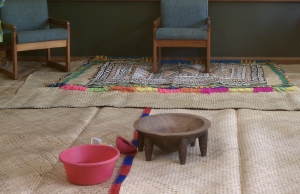 These large floor mats are often monochromatic in the woven area, but also sometimes have a colourful yarn (Fijians call it “wool”) border. Sometimes smaller mats have a black stripe or border. I used to wonder why the large mats were often so plain. Now that I’ve made a small mat, I understand- weaving a mat is a lot harder than it looks.
These large floor mats are often monochromatic in the woven area, but also sometimes have a colourful yarn (Fijians call it “wool”) border. Sometimes smaller mats have a black stripe or border. I used to wonder why the large mats were often so plain. Now that I’ve made a small mat, I understand- weaving a mat is a lot harder than it looks.
Amend that: Weaving a mat is fairly easy. Weaving a mat WELL is like learning to play chess: the basics come quickly, but being any good at it requires a combination of skill and practice. For the record, I am terrible at chess.
A nice overview of how mats are made is here, but there’s three parts:1) obtaining, drying and preparing the pandanus leaves 2) splitting and cutting the prepared leaves into the stuff you weave with, called voivoi, 3) actually making the mat.
Apparently step one is very labour-intensive, so even master craftswomen often buy rolls of voivoi from the market instead of doing it themselves. It seems like step one is it’s own craft, so I can’t say I blame them for letting someone else make the raw materials. I will certainly make another mat, but I don’t intend to learn how to do step one.
Step 2 involves unrolling the voivoi (see the 4th photo from this blog, which also contains another expat resident’s interesting story of learning how to weave) and using a knife to split it into strips of even width for weaving. This is the hardest part, in my opinion, because you’re splitting something not uniform (a long plant leaf) into 30 (or 60, 100, or who knows how many for a large floor mat) pairs that are all supposed to be about the same width of a finger (or thinner). The Fijian women we learned from can split 10 of these with an amazing precision in the time it took me to do one. Even taking my time, I more often than not ended up with uneven widths. My finished mat reflects this.
Step 3 is waving the mat. Once you get it started with 4 pairs of voivoi, it’s just a matter of adding to it, the same way over and over again (unless you’re adding a black stripe, which is more difficult, so I didn’t attempt to learn this). The tough thing is that weaving is done on the ground, bent over, and after an hour or two, you are very sore. My little mat probably took somewhere between 10-20 hours to do (I wasn’t counting)- I can only imagine how long a floor covering takes!
Anyway, here’s my mat:
I’m about 5 foot 3 inches, if that helps, and you can see how far my arms are outstretched.The edges are a little more even/square than they look in this photo, but the mat certainly has some flaws in its proportions. I am not providing a closeup of the weave itself because while it’s fine for a first effort, it’s a little embarrassing compared to what an authentic mat looks like.
At the first class, I made maybe 4 inches of the mat from the edge, and learned how to finish the sides. So maybe 10-15% of the mat was done at the workshop. I took it home and worked on it on the floor of our apartment while binge-watching True Detective DVDs from our Totally Legitimate Not Pirated No Sirree Neighborhood Video Store.
I was weaving for 4 hours straight, and when I stood up, I hurt with a pain I have never experienced from doing something while merely sitting. I continued working on the mat in fits and starts, and then brought it back to our teachers today to learn how to finish the top and bottom edges. I will confess that even though I did most of edge one after learning how, my teacher did the final edge, probably at 12 times the speed it would have taken me.
Though I did get some satisfaction in my craftsmanship when, upon seeing how much of the mat had been completed since our first meeting, my instructor said ‘You got a Fijian lady to help you with this”? Nope, all me!
Weaving is a little like I imagine knitting to be: enough of it is repetitive that you can listen to music or TV while you do it without breaking your concentration, and it can be kind of meditative. Except that once you stand up after being hunched over for 4 hours, any Zen-like calm you had is replaced by searing back pain. Next mat I do will have “time-outs” rigorously imposed.
I am not clear on how widespread weaving knowledge is in Fiji. It’s a woman’s craft, like quilting in the US, but pretty much every home in Fiji will have at least one mat, which you can’t say about quilts. I suspect that (like learning to make bread from scratch in home economics class in the US) most women living in traditional villages have been taught to weave by an elder; even if they don’t currently make mats themselves, they could do it a bit better than my pictured effort if they suddenly had to for some reason.
My limited reading suggests that currently (especially in cities like Suva) most large mats are purchased from a craftswoman/ market rather than being made by a woman in the family who will use the mats. Though the labor to weave a floor mat is intensive, labor (especially women’s labor) is cheap in Fiji, so I suspect that once you subtract the materials cost, a woven mat yields no more than $50-75 profit for the woman/women who spent dozens of hours (with the attendant back pain!) making it.
I guess some of this is the problem of what the market will bear: if the weavers charged the same hourly wage for their labour that we paid them for a four hour workshop, not many people could afford them, and families would just make their own mats, even if they looked wonky like my mat , and these ladies would have no outside income. So it’s a fine line, and I don’t claim to have the solution.
I will say that if you are a tourist or expat in Fiji, and you have the opportunity to buy a woven basket/purse from a local woman for $25 or less, you should do so. Unlike the fancy tanoas with inlaid turtles in the souvenir shops that are almost certainly made in China, a basket or woven mat is 99% likely to have been made in Fiji by a solo craftswoman or village crafts consortium, and your cash will go directly to someone who could really use it. Plus, they’re much sturdier than a reusable shopping bag for a quick trip to the market.
A linguistic aside: the one (recently reprinted) Fijian dictionary I own is copyright 1941, and has an anthropological bent as far as the terms it includes (like “Waqa- title of honour given to the slayer of thirty in fighting”, though it does admit this term is already obsolete in 1941). Under the entry for Ibe, one of the terms is “Ibe walu- a disease that lasts a long time, using 8 mats”. Walu is Fijian for the number 8, so this makes sense etymologically, but what I want to know is how does a disease “use” 8 mats? Through soiling them with disease by-products? By being so contagious 8 people in a family will die (and thus 8 mats will be needed to wrap the bodies of 8 deceased people in)? While Hermes was in the worst part of having dengue fever this week, he sweat so much that I can see it would take 8 sleeping mats to absorb it all if he slept on a mat rather than a mattress. Is ibe walu actually dengue fever? If you’re reading this and are a Fijian language expert, lemme know what ibe walu is, because now I’m curious.
Fiji has been having a dengue fever outbreak since about the start of the New Year. Over 10,000 people have had it in the last few months, with 11 deaths. In a nation of less than a million people, that’s like 1% of the entire population! Among my work colleagues and friends, I know at least 5 people personally that have had dengue fever this year.
Make that 6- Hermes got sick a few days ago, and today the doctor confirmed that it is in fact dengue.
If you’re otherwise in good health, dengue is usually not deadly, though it will make you feel really awful. Aside from the high fever, you can look forward to chills, sweats, headaches, and pain in your joints so severe that it hurts to move. The old name for it was “bonebreak fever”, if that gives you a clue what to expect from the joint pain. There is no vaccination or cure; you basically have to wait it out with rest and fluids. If you get sick enough, you get IV fluids to get you back on your feet. It is possible to have a mild case where you’re just sick for a few days, or in the worst situation, internal bleeding that can kill you.
Hermes started feeling like he had the flu, then got a fever close to 40 degrees C, and then spent a day and a half in bed sweating buckets. The fever broke about 24 hours ago, and the doctor said the next thing to expect is a day where you don’t feel THAT bad (today), then the fever will come back, followed by the joint pain and a rash. Oh, and then 2 weeks of being really, really tired.
We generally wear insect repellent whenever we leave the house, but we suspect what happened is that we went away for the weekend and stayed one night in a place that did not have air conditioning (note to self: do not do this in summer. Ever). We arrived about an hour before dark after it had rained (standing water and puddles = optimal breeding grounds for mosquitos), and the building not only had some open windows with no screens, but it was so hot we started sweating immediately after entering. We probably sweat off the mosquito repellent, and the one puny fan in our room didn’t keep them away from us. The mosquito that carries dengue usually bites during the day, so I guess they only needed that one hour (though we were also bitten by “regular” mosquitos throughout the evening).
While I didn’t get dengue (yet), I currently have my own weird Fiji disease: this terrible skin rash:
It appeared about 2 days ago, looking like the result of skin brushing repeatedly against something irritating like burlap . Then it started itching, and blistering. It looks a lot like what happens when a drop of hot cooking oil bounces from the pan onto your arm, but times a hundred. It doesn’t hurt like a burn, but it itches a lot. Fiji doesn’t have poison ivy or poison oak, so it’s not one of those, though it certainly feels like poison ivy feels. I also have a less severe similar rash on my leg above my knee.
At first I thought it was just a heat rash, but the coloring and placement is wrong (this is my wrist and arm; heat rash usually appears where you are sweatiest, like underarms). I’m seeing the doctor tomorrow in case it’s shingles (chicken pox for grown-ups, apparently) or something new to worry about.
If I suddenly stop writing here, assume that this rash is the symptom of some kind of horror movie/1st season of X-files transformation and that I have lost my humanity and/or ability to type and am lurking in the cargo hold of an abandoned freighter. Or, more likely, assume I’m offline whilst looking after Hermes, who’s going to be taking it easy for a few weeks even after the worst of the dengue is over.
We have now been here 18 months, which marks the halfway mark on my employment contact (so we’re in the literal “home stretch”). Somehow, in all that time, I have failed to make one post worthy of being tagged “kava”, even though I know I mentioned it here and there. I guess that kava is such a part of Fijian daily life that I almost forget it’s not common knowledge to my US readers; kinda like how Starbucks is so ubiquitous in the US you would never think to point it out to an overseas visitor as something worthy of discussion / explication, even though Starbucks would be a useful signifier to explain many aspects of American culture to a foreigner.
And since lots of friends back home in the US ask about it, and anyone reading this blog because they’re about to move here for a job should know a little about kava before they get offered their first shell of it, here is your introduction to your new pal kava, or “grog” as it is also called in Fiji
The TL; DR version is that kava is a drink with a peculiar taste with deep cultural/ social aspects in much of the South Pacific, and it’s a mild narcotic and/or intoxicant (depending on how much you drink). It’s not a “drug” in the sense we think of in the US; kava is legal, widespread, not expensive and entrenched in mainstream life – like coffee in the Western World. And just like coffee, if you drink enough of it at once, you will notice distinctive (and possibly unpleasant) physiological effects.
First- what is it? Basically it’s a beverage made of a specific root that’s been ground up and mixed with cold water. If that sounds like a weird thing to drink, consider the Nutrimatic Drinks Dispenser in the Hitchhiker’s Guide to the Galaxy parsing “tea” as “The taste of dried-up leaves boiled in water”. It is NOT alcoholic, and it is NOT fermented.
You can buy the roots and pound them yourself, or you can buy powdered kava that’s ready to mix. I don’t know any expats who pound their own roots- we just buy the powdered stuff from the market.
Here is a typical kava stand at the Suva fruit and vegetable market:
The unpounded roots are sold in bundles, the powdered stuff is in brown paper bags (on the shelf above the woman’s head). “Waka” is a grade of kava made from the stronger/more potent roots; other kava will be a blend of different parts of the root/plant. You can also buy kava in the chain grocery stores in the same $5 to $15 sizes, though it will typically be so-so quality (not all waka, more “filler”) compared to the stuff sold at the market or stand alone kava shops.
Kava is never* sold as a ready-to-drink liquid in a bottle or can; you consume it shortly after you mix it and should there be any left over that no one wants to finish (unlikely), you don’t save it.
Traditionally, kava is mixed in a large wooden bowl called a tanoa. It looks like this:
The large pink plastic bowl is for the cold water to add to the tanoa. The small pink bowl is a water scoop for the larger bowl (since adding water to the kava to get the perfect ratio is an art and not a science).
Kava for the entire group (however many will be drinking it) is mixed into the tanoa (more on the precise method later), and then served/scooped into cups called bilos, traditionally hollowed out coconut half-shells. When the bowl is emptied, more is made (repeat as needed).
This photo will also give you an idea of a typical “traditional” set up for social or ceremonial kava drinking: you sit on the floor around the tanoa on a large woven mat. This photo was taken before a retirement party at my work; while you wouldn’t drink kava at work normally, the tanoa will come out for special occasions like a retirement or the after-hours Christmas party.
The tanoa is part of the “kava ceremony” that is still part of Fijian culture today, but it’s not like every Fijian family these days would necessarily own a tanoa, especially if they live in a city and not a village. If you drink kava in a village community hall as part of a formal celebration, there will certainly be a tanoa present. If you are invited by a co-worker to have kava after work at his home, it will likely be mixed and served in something resembling the pink bowl in the photo.
You will see tanoas for sale at souvenir shops that have fancy inlays in the bowl of Melanesian design motifs, but the ones people actual drink from tend to be plain wood. Fun fact: the tanoas used in Samoa look similar to this, but tend to have way more legs than the ones in Fiji. There are also tiny tanoas that would fit in the palm of your hand sold at tourist shops; I’ve also seen these used as salt and pepper vessels at restaurants.
Second frequently asked question: What does it taste like, and what does it do to you?
This is why I call kava your potential frenemy. If you move here, you will have many, many opportunities to drink kava, and you may quite enjoy the effect. However, you are unlikely to ever enjoy (much less crave) the taste of kava. After a long hot hour of jogging or mowing the lawn, no one has ever said, “You know what would REALLY quench my thirst right now? Lemonade? Light beer? No, I want a nice tall glass of kava. ” But the effect is worth dealing with the taste for many people. Maybe like beer, it tastes weird the first few times and then you become fond of it. I’m not at that point yet, but I don’t find the taste awful, either.
Kava has been said, perhaps uncharitably, perhaps accurately, to taste like dirty dishwater. I wouldn’t go that far, though it certainly looks like it. Think of hot chocolate without froth or foam and you’re close. There’s definitely an “earthy” or if you prefer, “dirt-like” taste to it, but it’s not gross. Depending on how concentrated the mix is, it will numb your lips and tongue a little (or a lot) pretty quickly. If you’re going to be drinking a bunch of it over the course of an evening, you might consume hard candies (called “lollies” here, I guess the word is derived from “lollipops”) every hour or so as a palate cleanser or something. Note that Fijians probably wouldn’t say that the taste of kava is unpleasant, but they expect that foreigners won’t really care for it. If you try it once and don’t care for it, that’s okay. But if you drink it again after your inaugural cup, your Fijian co-workers will likely be delighted.
Kava makes you both mellow and chatty if you drink a lot of it. One or two bilos will probably do little to you other than numb your tongue a bit. But enough of it will make you very calm and not wanting to do much other than sit, talk, and drink more kava. I’ve heard it described as being similar to being stoned on marijuana, except without the munchies or thinking stupid things are hilariously funny. There does not seem to be a tradition of drinking kava while watching Will Ferrell movies, so I’m guessing that analogy is probably somewhat accurate.
I suppose you could drink enough kava to be “impaired” enough to prevent you from driving or making rational decisions, but it doesn’t act like alcohol as far as that’s concerned. In my limited experience it can’t give you anything like a hangover; the few times I’ve had a bunch of kava I slept very soundly but woke up as usual the next morning. Strong kava supposedly makes your eyes sensitive to light, which is why it is often consumed at sunset or in the shade. It will relax you enough to make you unmotivated to do much, so I guess it might be like taking valium- you might be able to function at work after taking it if your stress level is VERY high, but for a normal person it would just make you a bit sluggish and not particularly fond of being at work.
Unlike alcohol, it will not make you want to get in fights or otherwise lower your inhibitions. However, if you have kava after a few cocktails, they do not play well together. I made this mistake on our first holiday to Fiji 4 years ago; I had a cocktail and then wine with dinner, and then had my first ever bilo of kava at the “kava ceremony” the resorts do for tourists. I was fine for 40 minutes and then I crashed and needed to sleep NOW. It’s probably okay to follow one with the other once you have more experience with it, but you’d probably be wise not to have any alcohol in your system the first time you try kava.
Third frequently asked question: What do you mean about the traditional/ ceremonial aspects of kava drinking?
Hoo boy- you could write a book about this (and people have). The Cliff’s Notes version is that in rural village life, kava drinking is both a social thing (because it’s what you did for fun on a Friday night before electricity/radio/TV came around, but it’s still a big part of social life now that there’s more modern diversions to compete with sitting around the tanoa) and the thing you do in conjunction with important events (weddings, funerals, meetings, making family decisions, etc.). If the Queen or Pope comes to Fiji, there will be a kava ceremony to welcome them (and they will be expected to drink a cup, too). Of all the changes that Fijians have gone through in several hundred years since contact with other cultures (adopting Christianity and the written word, dumping cannibalism and tattooing), kava drinking has been a constant.
Even though the 19th century missionaries successfully dissuaded Pacific Islanders from traditional “savage” practices like inter-group warfare, and wearing minimal clothing, kava drinking seems to be the one thing that few were willing to give up in the name of becoming Christian. Most of the early missionaries did not approve of kava because they either thought it was an intoxicant or that it made men lazy, but even they couldn’t convince the chiefs that kava was incompatible with being Christian. Today there are a few Christian denominations in Fiji that prohibit members from consuming kava, but they are definitely the minority. Even the Mormons, who prohibit alcohol, coffee and “hot drinks”, have a complex position on whether kava is allowed or not for Polynesian church members.
The procedures for the traditional “kava ceremony” are easy enough to find online if you really want to know more. The chief sits in a particular place, and there’s rules as to who serves who and in what order. There’s a script of what you say when the kava is mixed, and you clap your hands in a certain way for a certain number of times after you drink. Even when you are drinking kava in a group socially (ie there is no chief present and there’s no occasion being marked) people will do the claps and other parts of the traditional procedure. You drink it all in one gulp; considering the taste, most folks wouldn’t be inclined to sip it anyway. Cups are shared and passed back to the person refilling them after you drink. Wait til everyone in the group has had one serving before asking for seconds.
It’s fine to ask “where should I sit” and “what do I do next” to the person who invited you to drink kava- Fijians are generally enthusiastic about explaining the traditions and what’s happening to a visitor/outsider. If you experience a kava ceremony at a resort, it will actually probably follow the traditional script, even though you the tourist have no way of knowing whether they’re being “authentic” or not. Sometimes at kava ceremonies that only exist for tourists (resorts, sponsored village tours, etc), the Fijian participants will kind of “go through the motions” of the process and not explain it to you and maybe not be so enthusiastic about it because they’ve already done 2 of these today, but they will almost always follow the proper ritual with all the steps.
Kava is not just a Fiji thing- it’s also part of the tradition in Vanuatu, Hawaii, Samoa, and Tonga, and probably there are some Pacific Islands that adopted it in the 19th century via trade/exploration contacts. In some cultures, it was just for chiefs; in some, women couldn’t drink it (this is still kind of the case today in most parts of Vanuatu aside from the capital and tourism destinations). In Vanuatu, there are many “kava bars” called nakamals (also the word for a meeting house) where you purchase kava by the shell and drink and chat with whoever happens to come in; these don’t exist in Fiji, not even for the tourist trade. Also, kava in Vanuatu is well known for being super-strong, so that two shells can actually make you disinclined to stand up or move. We did not drink any kava when we visited Vanuatu, mostly because we didn’t want to hang out in a nakamal and find ourselves unable to articulate to a cab driver how to get back to our hotel.
Kava is kind of a guy thing, though, even in places like Fiji where there isn’t a rule restricting it to men. It’s not that women don’t like it or don’t drink it, it’s that sitting around the tanoa for hours is a male-bonding thing that doesn’t seem to include women much. There is a popular TV show called “Bati ni tanoa” that I’ve written about before that’s just 3 dudes talking and joking while sitting around a tanoa that, even though it is a “talk show”, will give you an idea of how “social” kava drinking differs from the “ceremonial” kava drinking (though I believe that the social drinking generally follows the occasions that call for a traditional kava ceremony anyway). I have not spent enough time in villages to know if there’s a group of women drinking kava on a separate part of the mat from the men on a Friday night in the community hall, but when we’ve been walking around after sunset and seen a group drinking kava in the carport of someone’s house, it’s -always- men. Also, there’s kind of a cliche in Fiji that wives complain that their husbands stay out late drinking grog, which implies women don’t do the same (presumably because they have to stay home with the kids). When we had the (several) batches of kava at the retirement party, it was mostly the men who sat around the tanoa- the women sat on the edge of the mat and had an occasional bilo passed to them.
Fourth frequently asked question: How would I mix kava at home? Where does the best kava come from?
Kava is mixed by placing the powder into a thin cloth (like cheesecloth, a (clean) hankerchief, a (clean) tea towel) and making a ball (think of if you were trying to mimic a tea bag). You place the bag in a bowl of cold water, and squeeze and wring the bag repeatedly to mix the water and the kava. This 3 minute video will give you an overview (skip to the 1:40 mark to see the part specific to massaging the bag) of the process. It’s like brewing tea, except you have to force the kava to mix since it doesn’t “steep” like tea does. You can vary the ratio of kava to water depending on how strong you want it to be.
This is the part a lot of Westerners have a problem with- when you drink kava at a resort or a village, some dude you don’t know has had his hands in the tanoa squeezing the bag into what you (and a dozen other people) are about to drink. No one wears gloves when making kava, not even at the 4 star resorts. If you’re a germ-a-phobe, be quiet about how grossed out you are that someone’s hands are soaking in the beverage; I get why you think it’s gross, but people in the South Pacific will find your phobia weird and/or rude. The guy (it’s always a guy) mixing the kava has an important responsibility to the chief and the group, so if he forgot to wash his hands before touching something as important as kava, it would be a very big deal. Even if having clean hands before you stick them in the punch bowl wasn’t part of the ritual, no resort or tourist show wants to see people get sick from dirty kava- it’s bad for business. But if you’re still freaked out, politely decline to drink offered kava without giving the real reason. And if you really want to freak out, consider that the OLD (pre-missionary/Colonial period) method for preparing kava in much of the Pacific was to have children or women chew the root and then spit the mashed up root parts into a water bowl for mixing. Yum!
While most Fijians acknowledge that Vanuatu kava is more -potent-, there is no agreement as to which of Fiji’s 100+ inhabited islands produces the -best- kava. Every Fijian I have asked seems to think the best kava comes from whichever island he is originally from! But Kadavu and Moala seem to be mentioned a lot on signs in the market, ie “Pure Moala kava”. Unlike wine, even the “best” kava will not taste much better than middling kava, and also unlike wine, it’s hard to spend a lot of money on premium domestic kava- the price for small quantities seems to be about the same no matter where it comes from.
Last frequently asked question: Can I get kava in the US/Canada outside of the Pacific?
Maybe, but you’ll probably have to hunt for it (unless you live in a place like Hawaii, or a city with a large percentage of Samoans or Tongans). There’s now a kava bar in Portland, Oregon if you’re in the area. There’s no legal prohibition against kava in the US, but it’s probably easier to get someone coming back from Melanesia to bring you some than to try to track it down in the Midwest.
Anything else I didn’t cover (unlikely, considering how long this ended up!) that you wanna ask, leave a comment and I’ll try to find out the answer.
*I say never, but then today in MHCC I saw a poster advertising this:
These look to be the size of “5 hour energy” type shots and not “drinks” in the typical sense of things you would sip. These are almost certainly intended for export, as the idea of mixing kava with a fruit flavor would be bizarre (or possibly blasphemous) to most Fijians, to say nothing of the “drink it on the go” aspect of this product.
But if you like the calming effects of kava and don’t have buddies to empty a tanoa with, this might be just the thing.
Don’t worry, I’ll translate for my non-Fijian readers, and hopefully they will still be funny even if I have to explain the joke.
I have no idea what “Kaiviti” means, if anything, in any of the 100+ languages that exist in Vanuatu. But in Fijian, “Kaiviti” means “Fijian people” or “Fijian person”. Since nouns in Fijian don’t have plural forms and you must understand whether “person” or “people” is meant from the context of the sentence, I can’t tell you which the sign here means; it could be either.
So this is a sort of odd name: imagine a place in Europe called “The Belgian person motel” or “Italian people motel” and you’ll see why I think this is funny. It reminded me of the small town in Louisiana called “Des Allemands”, which is French for “The Germans” (and also a strange name for a town).
Maybe the owner of the motel is Fijian and wanted to convey that in the name. We didn’t stay here, though I was tempted just because of the name, so perhaps its a clever marketing strategy.
My Fijian language teacher introduced “kaveti”, the word for cabbage, into the food chapter, probably so that one of us would mispronounce it as “kaiviti” instead and confess to cannibalism when asked to say “I like to eat cabbage” in Fijian.
If this is actually pronounced “eh-saw”, it’s not really funny. But if it’s pronounced “ee-sah”, then it sounds like “isa”, which is a Fijian expression meaning “that’s a pity” or “I’m sorry things are going badly for you”. Which would be a terrible name for a corporation.
Tourists may encounter the word Isa in Fiji’s famous goodbye song, “Isa lei”, which is often sung to you as you get on a boat or bus to leave the resort to go back home. At my job, when an employee resigns, Isa Lei is always sung to them on their last day of work. They hand out lyric sheets for those of us who aren’t Fijian speakers, but pretty much every Fijian speaker in the country will know the words to this song by heart.
I’d always wanted to go to Vanuatu, and it’s so close to Fiji that it’s not quite the exotic destination it would be from North America. So we spent a week there over Christmas, mostly for Scuba diving on the island of Espiritu Santo, which was as great as I’d heard. More on that later.
So Vanuatu has some things in common with Fiji; they’re both Melanesian nations that became independent in my lifetime, both have a substantial amount of people living in a rural/village setting, and both have reasonably developed tourism industries. But Vanuatu is less developed (in general) than Fiji, while at the same time having a somewhat more cosmopolitan/ French capital (Port Vila), even though Vila is almost half the population (approx 45,000) of Suva (approx 86,000). It was just different enough from Fiji that it was an exciting holiday, but had enough similarities (island time, swarms of cruise ship tourists) that we weren’t culture shocked.
For those of you that know nothing about Vanuatu and don’t feel like reading the wikipedia article, the most important things to know are 1) before gaining independence in 1980, it used to be governed by a joint French/British colonial government, which means that both French and English are official languages 2) there were a ton of US/Allied forces based there during World War II 3) for a nation of less than 300,000 people, it has an astonishing number of languages, most of which are only spoken by a few hundred folks and aren’t necessarily mutually intelligible, resulting in the creation of a creole (which is like a pidgin with more grammar rules) called Bislama that is the 3rd official language.
Bislama derives from English but with grammar rules similar to other Pacific languages. At first it looks like a strange baby talk; some words look enough like English that you can get them by context:
“Mi wantem Tusker” = I want Tusker Beer
Pablik laebri blongPort Vila/ Vanuatu kaljoral senta =
public library of Port Vila/ Vanuatu cultural center
Sigaret i kosem sik blong hat= Cigarettes cause sickness of your hat.
Okay, that last one’s not exactly right- “hat” actual means “heart”. But you still get the idea. Also, I had no idea Peter Jackson had given up film-making to become a tobacco baron.
Anyway, Bislama is at least easier to puzzle out than Fijian, even if it seems a little less eloquent. Once you know the origin of certain words (blong= “Belong/s (to)” , yumi = (from you + me)= “we”or “us” ) you can sorta read longer notices like this one:  “tanku tumas” of course means “thank you very much”, “save” is to know, like “savvy” (it does not rhyme with “Dave”), “sipos” is “suppose” and “yusum” is “use”.
“tanku tumas” of course means “thank you very much”, “save” is to know, like “savvy” (it does not rhyme with “Dave”), “sipos” is “suppose” and “yusum” is “use”.
Oddly, this sign was on the public toilet at the Vanuatu Museum and had no English or French translation. Most posted signs are in English and French and Bislama, especially in places that tourists go. My only conclusion is that the museum management hasn’t observed tourists using the incorrect bathroom and therefore didn’t feel they needed to be reminded, but there’s some ni-Van guy who for whatever reason won’t use the men’s toilet and this sign is for him.
So aside from signs in bizarro not-English, Port Vila has a larger restaurant scene than Suva, including a few fancy French places and numerous places to get good beef/steak. The beef raised on the island of Santo is well regarded and exported to other parts of the Pacific and as you might guess, is not raised in the industrial “factory farm” methods of larger developed countries. So if you generally eat beef, Vila’s a good place to do so.
We went to a few grocery stores in both Vila and Luganville (the largest city on the island of Santo) and both showed French influence: Vila had pate’, and both stores had fresh batards/French loaf bread for US 60 cents per loaf! They were delicious, too. I wish we had stayed a little longer in a place with a kitchen so we could have done more eating from the grocery store, because they had a lot of stuff we couldn’t get here. I’m pretty sure I saw a frozen pizza at one store!
We made the mistake of flying from Port Vila to Luganville on Christmas Eve, and even though it’s only an hour-long flight, it took most of the morning to check in and board, as the airport was packed with families travelling to their home islands from the capital. There were at least 4 domestic flights leaving that morning from an airport with maybe 3 gates total, and everyone was checking HUGE amounts of luggage, mostly things you could buy in Vila, but not in the outer islands. While I complain about the scarcity of commonplace goods in Fiji, seeing someone flying home to Aneityum who is checking a shovel, a laundry basket and 2 cardboard boxes packed with who knows what really makes you appreciate your (relative) bounty in Suva. For the flight to Luganville, they not only weighed our luggage, but us- we had to hop on the baggage scale and the clerk made notes about the combined passenger/cargo weight on a card. When I saw the plane, I understood why:
This is not a charter or private plane: this is an official Air Vanuatu Twin Otter plane that seats maybe 20 people. Despite the crowds at the airport, our plane was only half full. This is the smallest plane I’ve ever been on. Most of the planes on the runway going to other islands of Vanuatu were a bit larger than this.
Here’s what the inside looks like:
No first class, no beverage service, no toilets, no in-flight magazine.
There was a safety card with the emergency exits marked, though:
We spent more time in Santo than we did in Vila, because we were mostly visiting to dive two famous WWII sites: the Coolidge, and Million Dollar point. If you’re not into diving because you think it’s all fish and coral, Santo could change your mind.
 The Coolidge is a large wrecked ship that managed to sink mostly intact in reasonably shallow water, making it one of the most accessible (and popular) wreck dives in the world. You can actually swim to the wreck site from shore, and even though part of the ship is in water too deep for “regular” scuba divers to safely do, even novice divers can go INTO some of the cargo holds and look around (which was fascinating-we saw an apparently watertight jar of cotton swabs that are still bright white even after 70 years underwater).
The Coolidge is a large wrecked ship that managed to sink mostly intact in reasonably shallow water, making it one of the most accessible (and popular) wreck dives in the world. You can actually swim to the wreck site from shore, and even though part of the ship is in water too deep for “regular” scuba divers to safely do, even novice divers can go INTO some of the cargo holds and look around (which was fascinating-we saw an apparently watertight jar of cotton swabs that are still bright white even after 70 years underwater).
We did 3 dives on the Coolidge and we could have easily done 10 and still seen different parts of the wreck. You aren’t allowed to remove anything from the wreck, so there’s weird little bits of cargo like a pile of raincoats, dinner plates, helmets, and military equipment still sitting around.
Speaking of military equipment still sitting around, our other dive was Million Dollar Point, which is also fascinating and also accessible from shore, but kinda sad/upsetting as well. If you’ve ever wanted to see what a bulldozer and piles of tires look like underwater, this is your chance. Read this article for some insight and background, or just look at some very good underwater photos here, but basically the US military dumped a whole bunch of crap into the ocean after the end of WWII rather than bring it back or leave it for the British/French government. You also aren’t allowed to salvage anything from this dive site (most of it is too large/heavy to remove by hand, anyway), but a fair amount of bottles and bottle pieces wash up on the shore. Our hotel had a shelf displaying some of these artifacts:
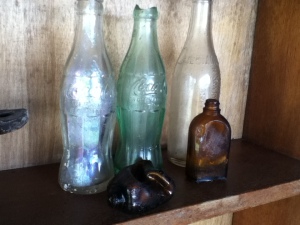 Fun fact: old Coca Cola bottles had the city of manufacture stamped into the glass on the bottom. Hermes found a piece of one on the beach that says “Seattle, Wash” that is now his favorite keepsake from the South Pacific.
Fun fact: old Coca Cola bottles had the city of manufacture stamped into the glass on the bottom. Hermes found a piece of one on the beach that says “Seattle, Wash” that is now his favorite keepsake from the South Pacific.
Other WWII legacies in Vanuatu are re-purposed Quonset huts: those semi-circular easy-to-construct metal buildings erected by the military, There were quite a few of them in Luganville, in various states of repair/use:
Luganville has about 13,000 residents today, but during WWII there were 40,000 soldiers stationed there, among them James A. Michener, the author of “Tales of the South Pacific”, which you may be more familiar with as the source of the Rogers and Hammerstein musical “South Pacific”. As far as I could tell, there’s nothing on Santo named after/commemorating Michener’s time there.
Other things to do on Santo are visit blue holes, which are freshwater swimming spots that are impossibly blue and clear. 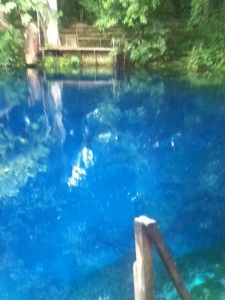 There are a bunch of them on Santo, sometimes off the main road, sometimes in more isolated areas. You typically have to pay a small fee to the landowner (the equivalent of US$5 to $10) to swim there, and many have amenities like wooden benches, changing sheds, or rope swings. I was surprised that the water in the blue hole was actually a lot colder than the water at the beaches.
There are a bunch of them on Santo, sometimes off the main road, sometimes in more isolated areas. You typically have to pay a small fee to the landowner (the equivalent of US$5 to $10) to swim there, and many have amenities like wooden benches, changing sheds, or rope swings. I was surprised that the water in the blue hole was actually a lot colder than the water at the beaches.
Speaking of beaches, there’s a famous one on Santo called “Champagne Beach”, which is about a 20 minute drive from the main road through a village (there’s a small fee to visit it, just like the blue holes). It’s known for having pristine white sand and clear blue water, and it was postcard pretty.
We went snorkelling there and saw the typical fish/coral; nothing amazing, but not bad. This is a popular stop for cruise ships, but that’s probably the worst way to see it, as it’s a small beach and would be less lovely if it had hundreds of people on it.
In fact, there are dozens of little wooden stalls set up on the beach for locals to sell handicrafts and souvenirs to the cruise ship people when they come. Since we weren’t there on a cruise day, the stalls were empty.
I wouldn’t say Champagne Beach is over-rated, exactly: it’s pretty and pristine, as advertised. But there’s another shore not so far away from it that I think is a better stop if you happen to be driving around Santo, and that’s the Port Olry beach.
You’ll also see it written in some guides as “Port Orly” and that’s what I keep wanting to type, but “Olry” is the correct spelling.
Anyway, Olry is just as pristine as Champagne Beach, is a shorter distance from the main Santo road, costs a little less in entrance fees, and there’s an amazing cafe on the shore where you can enjoy a Tusker Beer and lunch (there are no such amenities on Champagne Beach if there’s not a cruise ship approaching).
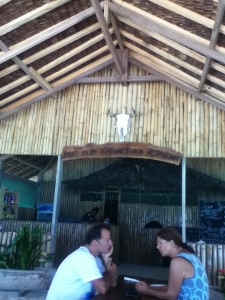 It took quite a long time to get our food as the cafe is likely running on only generator power and propane grills, but it was delicious. They had Coconut Crab on the menu, which is a REALLY large land crab native to many islands in the South Pacific, but is possibly threatened in some places. As I understand it, it is still okay to eat them in Vanuatu, but there are restrictions on how many/what sizes can be served in restaurants to insure the species is not over-harvested out of existence.
It took quite a long time to get our food as the cafe is likely running on only generator power and propane grills, but it was delicious. They had Coconut Crab on the menu, which is a REALLY large land crab native to many islands in the South Pacific, but is possibly threatened in some places. As I understand it, it is still okay to eat them in Vanuatu, but there are restrictions on how many/what sizes can be served in restaurants to insure the species is not over-harvested out of existence.
We did not eat the Coconut Crab at this cafe, but I did have it as part of a buffet dinner elsewhere in Vanuatu. It tasted pretty good, but it’s rather hard to eat because the shell is very strong and hard to crack, even with a nutcracker. I had eaten something billed as coconut crab when I first arrived in Fiji, but now I’m thinking that was merely a land crab served with a coconut cream sauce (ie “coconut crab” in the same sense as “coconut macaroon” and not a Coconut Crab) since I have not seen it on a menu in Fiji since.
Overall, we had an excellent time, and I hope to go back to see some of Vanuatu’s other islands before I leave Fiji. But it wouldn’t be the South Pacific if there wasn’t some policy or procedure that defies all logic, and makes you wonder why no one has yet come up with a more logical way to accomplish the same goal. In this case, I refer to the airport departure tax (you don’t have to deal with this when flying from Vanuatu to another county, only some domestic flights within Vanuatu).
In most places that have such a thing, the tax is a separate line item on your receipt when you purchase your ticket. You probably don’t even notice you’re paying it. In Vanuatu, aside from whatever taxes are already included in your ticket, you have to go to a separate counter at the airport, pay the departure tax in cash (be sure to hit the ATM beforehand if you’re flying straight from Vila to another island), and get a paper receipt and one of these wooden chits (front and back pictured, as we each had one) to prove that you paid the tax:
You do not get to keep this wooden chit; you give it to the gate agent with your boarding pass (that you got at the OTHER counter).
In case you’re wondering, 200 vatu is about two US dollars, or if you paid attention to the photos earlier in this post, 2/3 of the price of a bottle of Tusker beer. So they actually keep someone on the payroll at the airport to sit at a counter to take your two bucks and give you this slab of wood, which you give to someone else 20 minutes later.
Why do they collect this in person rather than adding this piddly amount as a line item to the ticket you purchased and divying it up to the various airports weekly (it’s not like there’s any other airlines competing with Air Vanuatu domestically)? No idea. But it seems like a very South Pacific way of doing things (anyone who has ever dealt with a bureaucrat in Fiji is probably nodding and smirking while reading that). A minor complaint, really, since otherwise we had a great time in Vanuatu, but I just found it funny.
I realize that few people (other than scuba divers or cruise ship passengers) would likely consider a holiday in Vanuatu, but it really is an interesting and friendly place. If I am able to go back, next time I want to go to Tanna, the island that has an active and accessible volcano that is said to be breathtaking (not literally). There’s also an annual land-diving (like bungee jumping, but with vines instead of elastic) demonstration on Pentecost, but this only happens during months when it would be hard for me to take time away from work. Even if I don’t get to return, I’m glad I got to go- travelling off the beaten path was one of the perks of taking a job in Fiji, and I’m lucky I get to take advantage of these opportunities.

